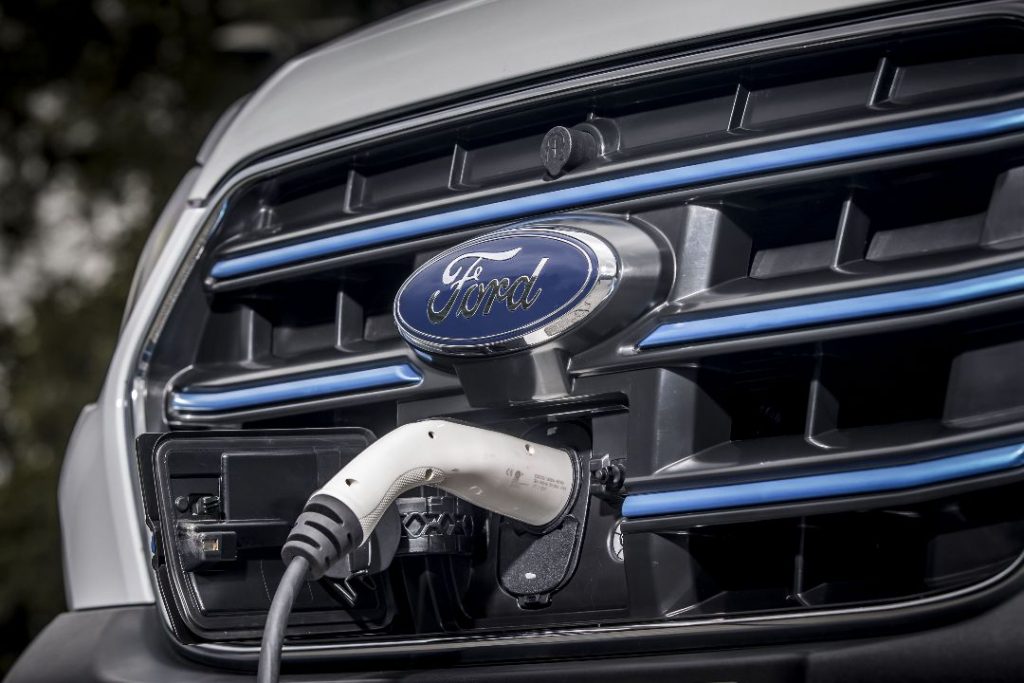Home »
The Ford Transit is the backbone of Britain for a reason, the Ford Transit towing capacity is unrivalled in the large van sector. The Ford Transit has the towing weight of a heavyweight boxer. It pulls no punches and the Ford Transit tow rating is as good as you'll find in the large van segment.
The Ford Transit van has a towing capacity of 3.5 tonnes or 3,500kg (7716 lbs) which is the weight a Transit can tow at its absolute maximum. This is the applicable to the all 3.5-tonne GVW models as well as some of the larger weight vans - the ones with double wheels.
The maximum Ford Transit towing weight is 3500kg for a braked trailer. The maximum unbraked trailer weight is 750kg. There are a few exceptions for smaller vehicles as to what size of braked trailer they are capable of pulling.
The Transit comes in smaller sizes with vans of a 2.9-, 3.1- and 3.3-tonnes. This poses a few problems for the overall towing capacity of the Transit because the GVW alters the gross train weight (GTW) - also known as gross combination weight (GCW) - of the van.
Ford makes it really nice and easy to figure out which van you've got. That's because you'll probably know that the large Transit vans are often referred to as Transit 350. The clue here is that the 350 part is in reference to its GVW of 3.5 tonnes.
The smaller models are therefore known as follows:
If you need to know about the Transit dimensions or the Transit payload we have handy guides which also explain these weights and sizes, but those are the basics you need to know about the Ford Transit weight for towing.
It sure can, a Transit van could tow a standard unbraked trailer as well as a proper braked trailer suitable for pulling a car.
You need to be mindful of what you put on the trailer that the Transit van is towing, but as it has such a high towing capacity of 3500kg most vehicles will be ok.
It does depend on the maximum weight of the car, boat, mobile home, jet ski or whatever else it is you fancy towing. The total payload on the trailer, plus the weight of the trailer itself, must not exceeded the Transit towing capacity. As most trailers are built to be light this shouldn't alter now much your Transit van can tow, but it's important to keep the overall total in mind for a couple of reasons.
Firstly, the weight of the trailer forms part of the towing allowance. The trailer weight is also part of the overall gross train weight (GTW) of the Transit van and trailer towing combination. Importantly includes the van, the people in the van and any other contents in the van - keep reading and you'll understand why this is a really crucial factor in the towing capacity.
The Ford Transit has a gross train weight of up to 7-tonnes or 7,000kg (15,432 lbs) for the very largest twin wheel vans. The other sub 3.5-tonne vans have a GTW of 5,000kg (11,023 lbs).
But what is GTW and why does it affect what I can tow? Well, the gross train weight is the total weight of the van plus the weight of anything you are towing, so imagine you've filled a 3.5-tonne Transit van completely full of weight but then you need to tow something.
The total of the Transit, plus fuel, plus your weight, any passengers and whatever you have in the cargo area has an overall weight of 3500kg. In order to not exceed the total allowable GTW of 5500kg you must therefore not tow anything more than 2000kg.
If you want to maximise your towing capacity and tow a full 3500kg - the maximum the Transit is safely allowed to tow, so as not to damage the chassis or towing arm - then you'll have to lower the amount of weight you are carrying.
The Ford Transit tow bar isn't a standard fit item but it can be specified as an option on all models. The tow bar for the Transit costs just £400 as an option and depending on the spec of the vehicle you have gone for (ie. which trim it is, Limited, Trend etc) it will also then come with Trailer Sway Control. This is a safety feature designed to stop the trailer from snaking around when it becomes unstable.
Despite the size of a Ford Transit it is still possible to tow it. The Ford Transit has a dedicated towing eye with the mounting point. The Transit towing eye location is in the front of the grille.
First you need to get the towing eye which can be found under the passenger seat of the Transit - it's usually bolted to the floor.
You then need to connect the towing eye to the front of the van. The location to put the towing eye on the Transit is behind a small circular cover to the side of the numberplate and next to the headlight.
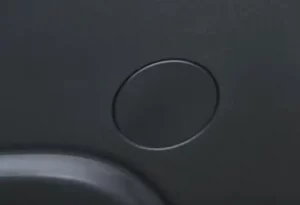
You'll need to push the circle in and use a plastic device (so as not to scratch the paint) to prize the cover out. Simply insert the Transit's towing eye into the recessed hole and screw it into place. You can now insert a towing rope into the hole.
As well as using and above towing eye for the front of the vehicle there is also a towing eye loop at the rear of the Transit. It's a small loop under the rear bumper that you can see if you duck down a little bit behind the van.
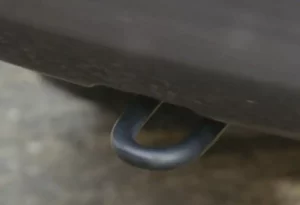
You can use it for winching the Transit van if it gets stuck so it will help with recovery. It's not to be used for towing in the same way as the dedicated towing eye mentioned above.
Ford Pro in Europe has announced changed to the Ford Transit and Ford E-Transit due to go into production in 2024. The enhancements include improved connectivity features, wireless software updates, simplified aftermarket conversions, and automation of repetitive tasks for delivery drivers.
There are also chassis improvements and the addition of an eight-speed automatic transmission for front-wheel-drive models that will boost payload capacity, improve vehicle performance, handling, and efficiency.
The new technology features include the SYNC 4 communication and information system, supported by a 12-inch touchscreen and an 8-inch digital instrument cluster for a driver-focused cab experience. The system also includes Connected Navigation for real-time traffic information to assist drivers in planning routes and staying on schedule. The Ford Transit will also be equipped with Ford's latest 5G modem, providing fast connectivity for smart technologies and enabling wireless updates through the Ford Power-Up system.
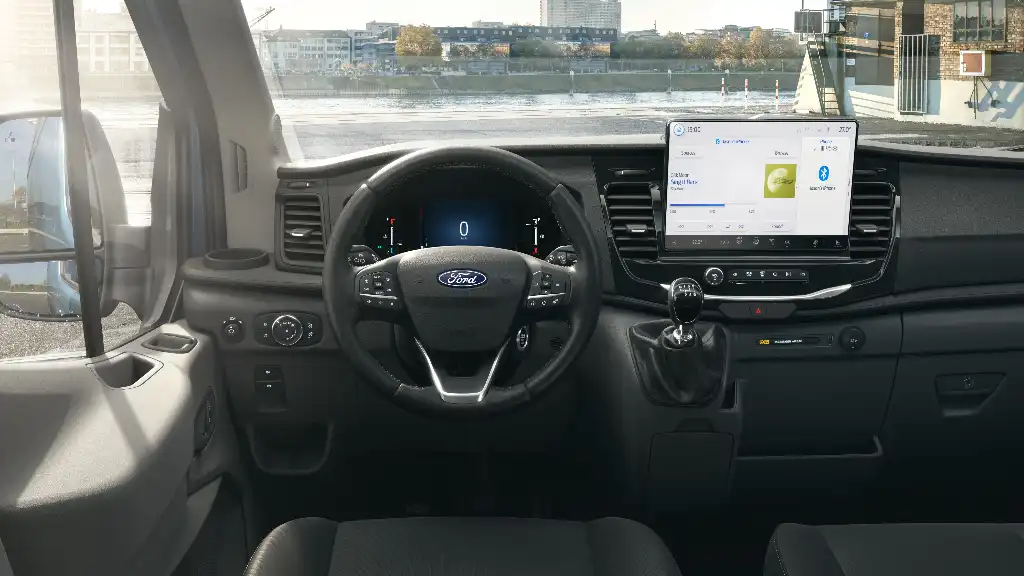
Additionally, the 2024 Transit models will introduce Delivery Assist technology, available on long wheelbase panel van E-Transit and Transit models with automatic transmission. This feature automates repetitive security tasks for delivery drivers, saving time and enhancing efficiency. The system automatically stops the engine, activates hazard warning lights and alarms, locks doors not in use, and restarts the engine when the brake pedal is pressed.
The Ford Pro Upfit Integration System allows drivers to control aftermarket installed equipment via digital buttons on the in-cab touchscreen. It also integrates with Ford Pro software packages for remote monitoring, enabling features such as temperature tracking in refrigerated vehicles.
In terms of safety, the 2024 Transit models will come with a comprehensive suite of advanced driver assistance systems as standard, including Pre-Collision Assist with Autonomous Emergency Braking, Lane Keeping Alert & Aid, and Intelligent Speed Assist. Optional driver assistance packs offer additional features such as Blind Spot Information System, Intelligent Adaptive Cruise Control, and Auto Park Assist with a 360-degree camera.
The 2024 model will introduce a new eight-speed automatic transmission option for front-wheel drive Transits, improving performance, efficiency, and load-hauling capability. The new transmission enables a higher Gross Vehicle Mass (GVM) of up to 4,250kg and Gross Train Mass (GTM) of up to 6,000kg, providing increased capacity for payloads.
Furthermore, the 2024 Transit models will feature new wheel hub and brake systems, reducing weight and making brake replacements quicker and easier. New 16-inch wheels will become standard across the model.
Ford Pro expects the upgrades to enhance conversion potential and save time and effort for operators. The new heavy-duty Gross Axle Weight Rating pack, available for front-wheel drive models, will increase the front axle maximum weight, particularly benefiting applications such as horseboxes or low loaders that require high payloads and easy access to the load area.
The latest Transit and E-Transit models will be available for customer order later this month, with production starting next year and deliveries expected from summer 2024.
Ford gave the first public airing of next year’s Ford E-Transit Custom along with details of the next-generation Transit Custom range which will include PHEV and new EcoBlue diesel vans.
The Ford E-Transit Custom will have a 380km range and support 125 kW fast charging, while the new Custom PHEV uses a similar powertrain to the Kuga PHEV with a 2.5-litre petrol engine combined with a 11.8kWh battery to give 57km of electric-only range.
New Transit Custom diesel engines will range from 108hp to 167hp with a new 8-speed auto gearbox joining the range along with an all-wheel-drive option. All next-generation Transit Custom vans will get the Ford Pro range of software and connected service which include Ford Pro Telematics.
Like its larger sibling, the Ford E-Transit, the Ford E-Transit Custom will be built in Turkey.
Ford also announced plans for its new Ford Pro Upfit Integration System an interface module that establishes a direct connection to the electrical system allowing conversions to be controlled via the 13-inch SYNC 4 touchscreen rather than though bolt-on switchgear. It is hoped that this will speed up the delivery time of conversions as well as improving reliability as converters won’t have to modify the cab area or splice into factory wiring.
Speaking about the new Transit Custom PHEV, Ford Pro CEO, Ted Cannis said: “Not all of Europe was ready with the charging infrastructure or facilities to go completely electric. In Eastern Europe, Southern Europe, there are places where it's not a solution yet because it's just not available.
"If you have dense urban zones, still where you don't have the infrastructure in place, the plug in hybrid allows you to enter the city, like in London, and then you can go out and do a lot of distance. I think getting this bridge to full electrification in the near term, you have to have those decisions that's why to lead the market from end-to-end in Europe we really thought we needed the whole gamut during this period of transition.”
Ford has created its fourth and most powerful SuperVan to date, the Ford Pro Electric SuperVan. The new SuperVan has a staggering 2000hp from four electric motors to give it a 0-62mph time of less than 2 seconds and a top speed of more than 185mph.
It uses parts from the upcoming Ford E-Transit Custom and has been fully connected using the recently launched Ford Pro tool kit. That will allow real-time data from the SuperVan to be uploaded to the Ford Pro cloud and analysed by fleet managers or would-be race directors.
Four electric motors, one in each wheel, are powered by a 50 kWh liquid-cooled battery. It uses a bespoke control system to produce a combined 2000hp.
Read our electric van reviews
The Electric SuperVan also gets a purpose-built, track-ready chassis steel with a steel spaceframe and lightweight composite body panels. Under the skin there is unequal-length double wishbone suspension at each corner with motorsport-grade front and rear subframes, uprights, and brakes.
Unusually for an electric van, it has a two-speed gearbox with a very short first ratio to ensure maximum gearing to get the best possible acceleration.
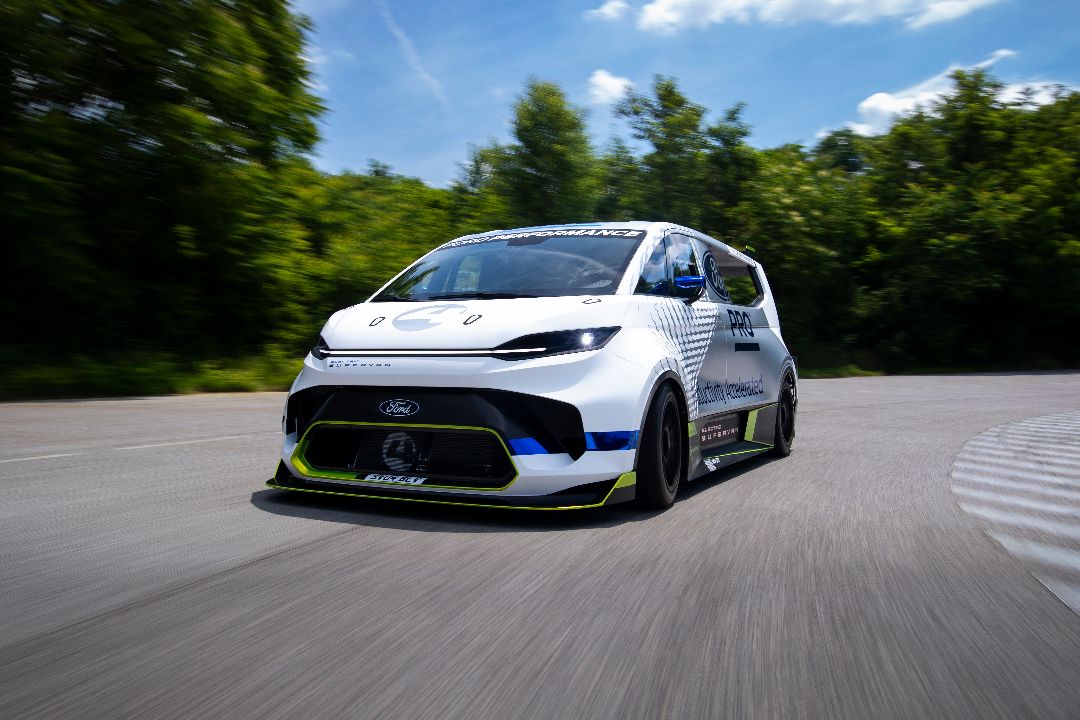
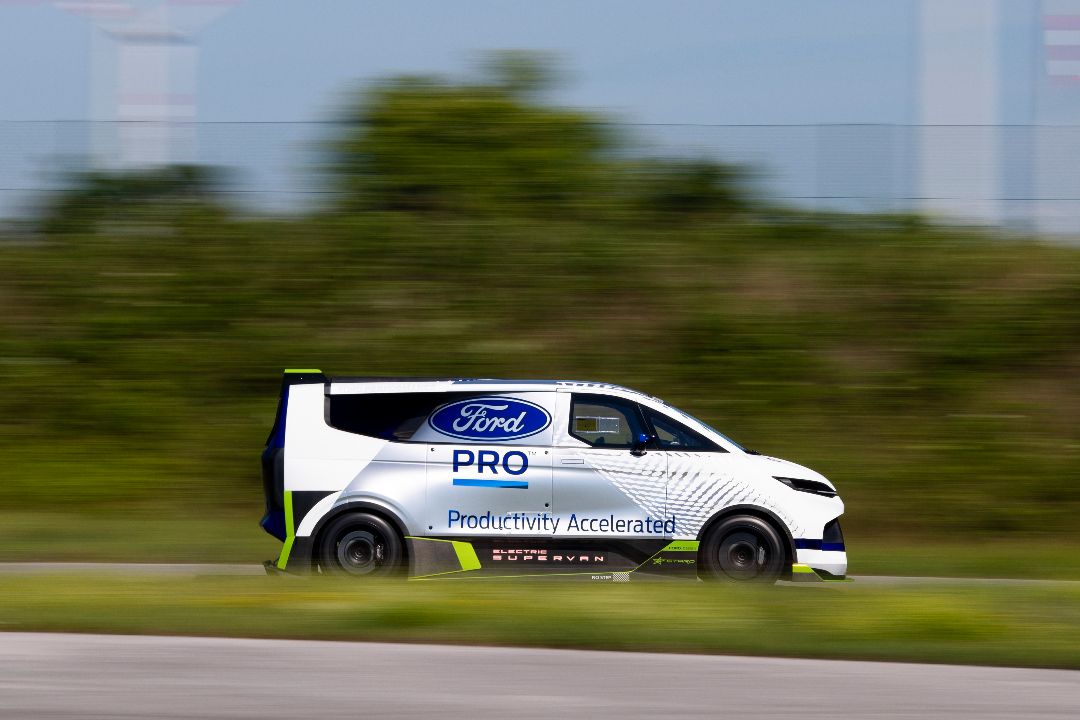
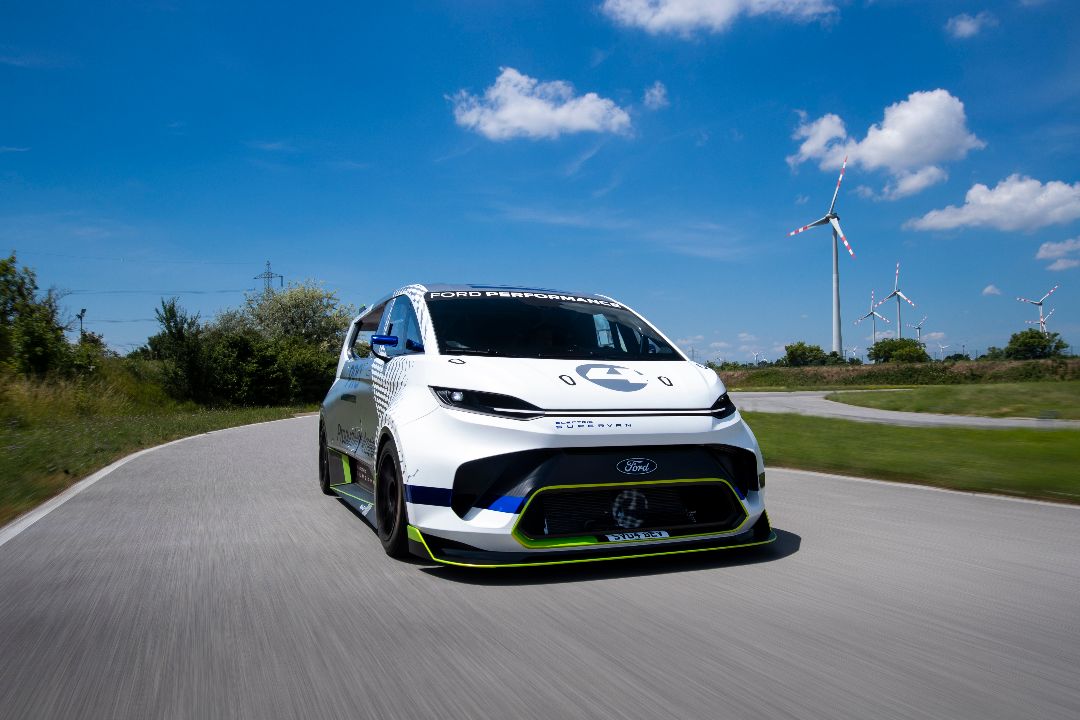

As it is a connected van, the new SuperVan 4 gets a host of onboard cameras that can be broadcast to its audience, with the driver also able to pull camera feed into the on-board Sync 4 screen which is a carry-over from the new Ford E-Transit and the E-Transit Custom.
Despite its massive aero wing rear diffuser, front splitter and side skirts, not to mention its staggering performance, the Electric SuperVan is still a commercial vehicle and has a loadspace! There's a side door for loading and unloading and Ford is said to be developing a secure electromagnetic release system which can be controlled via the SYNC screen.
The Electric SuperVan’s interior gets a full roll cage as well as FIA approved racing seats. Not going to the racetrack? SuperVan can use the Sync 4 system as a normal sat nav or to find a charger, connect to WiFi and make phone calls. But the touchscreen also lets you control the selectable drive modes. They have been tailored to the Electric SuperVan’s torque maps and regenerative braking to give five very different driving modes.
Road – for rare cases of “normal” driving
Track – for balancing speed and cornering on track with racing slick tyres
Drag – for maximum acceleration on drag strips
Drift – for spectacular drifting, agility demonstrations and snow driving
Rally – for optimum performance on tarmac and gravel rally stages with special tyres
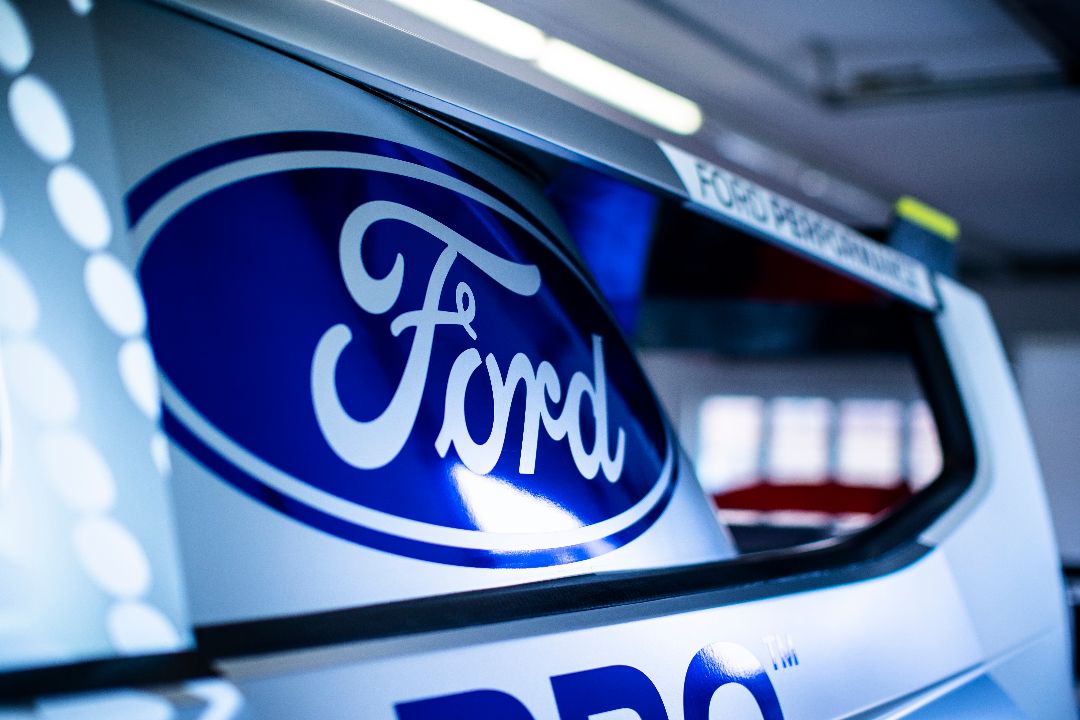
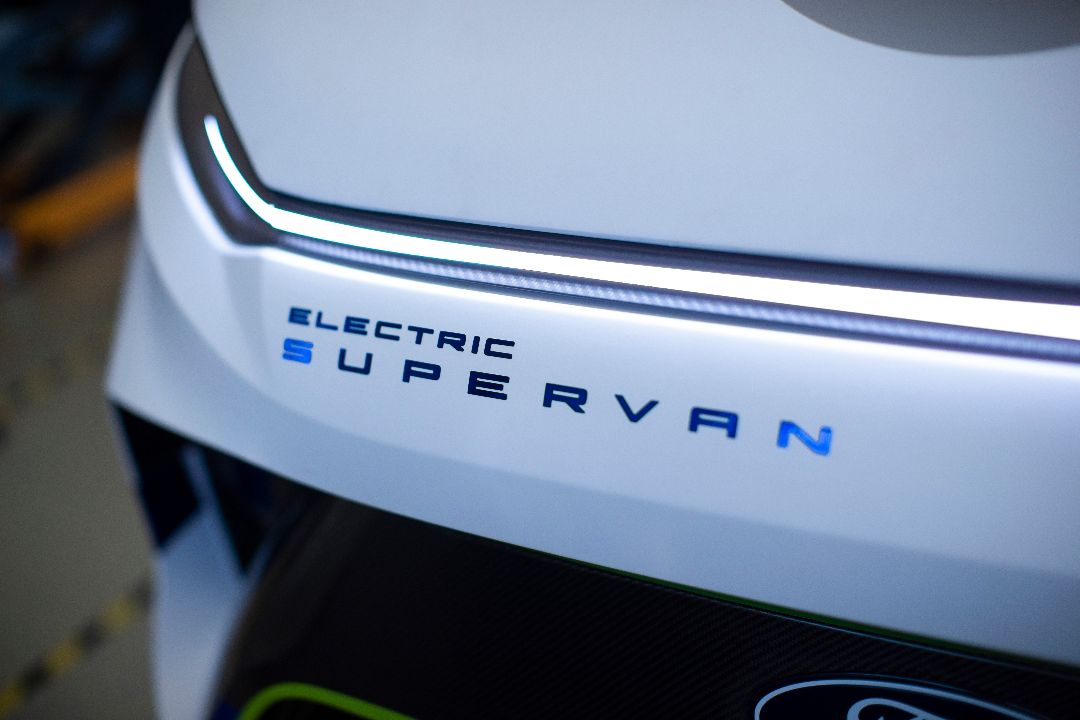
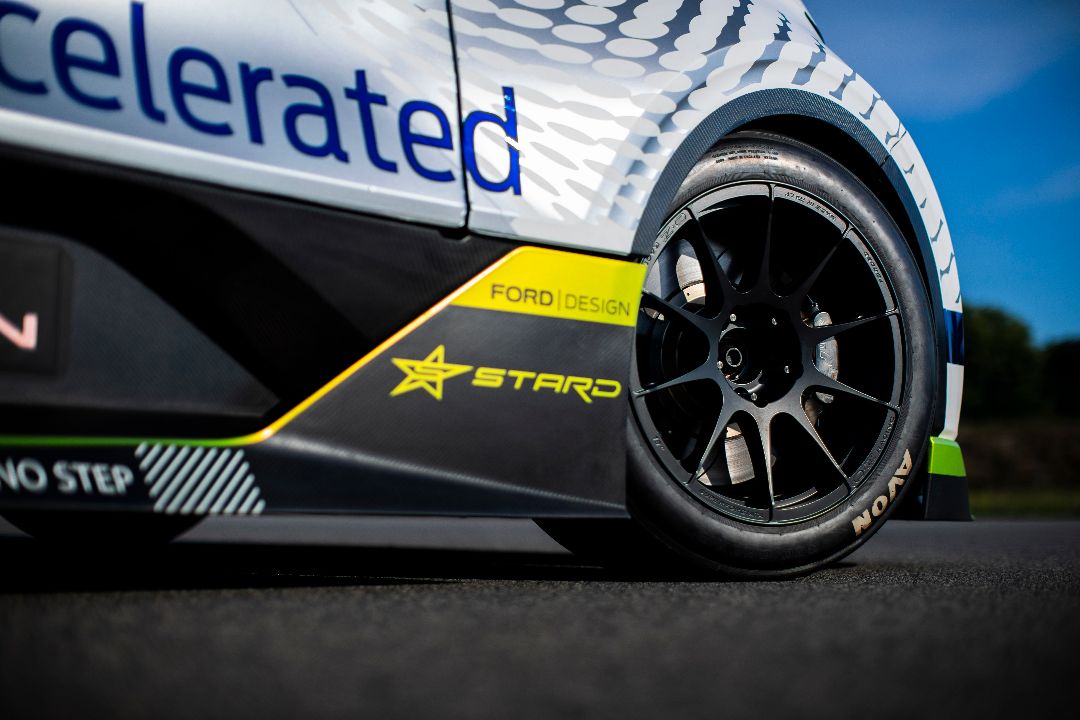
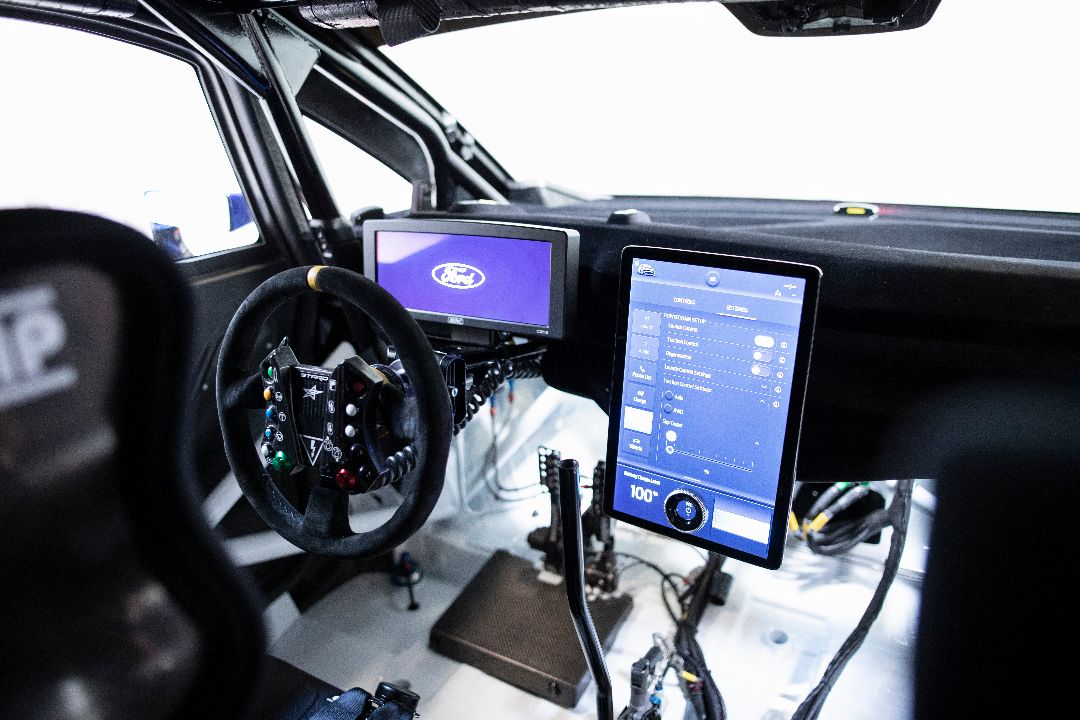
Built by Ford Performance and motorsport experts STARD, the SuperVan’s cutaways and dorsal fin help to push air onto the rear wing. This will generate downforce and keep the Electric SuperVan on the track.
Other electronic features include launch control, a pit-lane speed limiter and three-stage regenerative braking. The braking is similar to the L Mode function on E-Transit van. At low speed, Eco Mode keeps the motors at their optimal efficiency and turns the regenerative braking up to max. It also disengages drive to the rear axle. At the other end of the scale there’s an E-Boost button which gives a temporary power and torque boost.
Perhaps the maddest digital decision is the inclusion of something which Ford are calling a Tyre Cleaning Mode. This they say “can deliver exhilarating driving displays”. That's because it allows you to fully brake one axle while spinning the other. That should mean some impressive burnouts on the front or rear axles. Which of course would only be every used appropriate to help clean and warm the tyres before performance runs…. Yeah right!
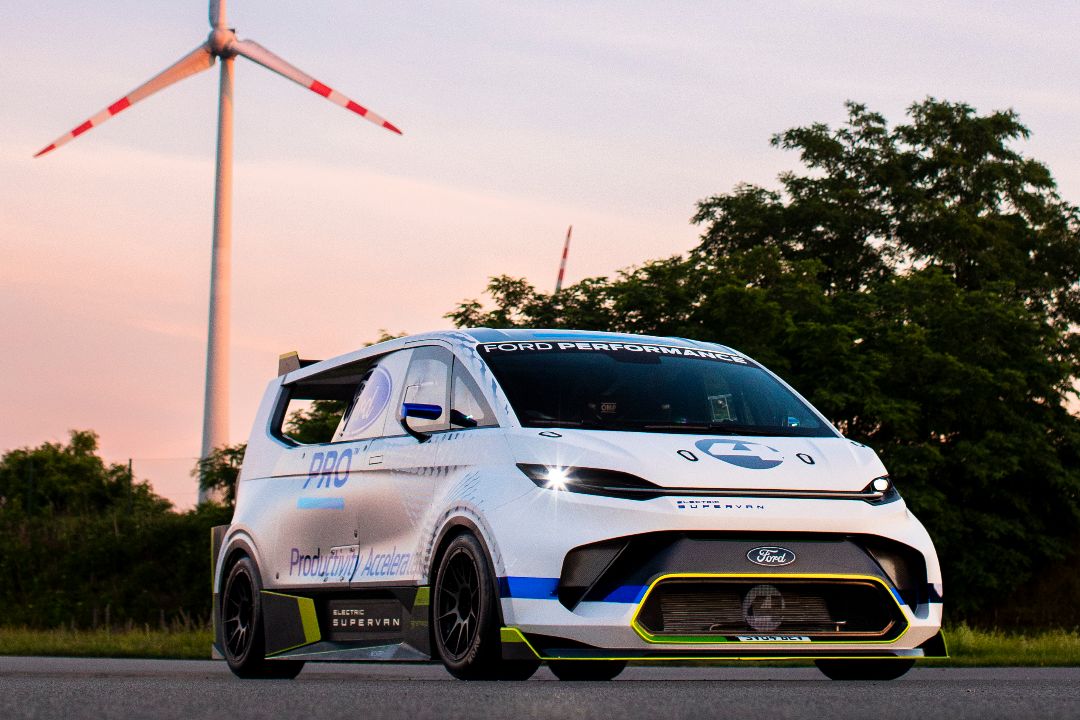
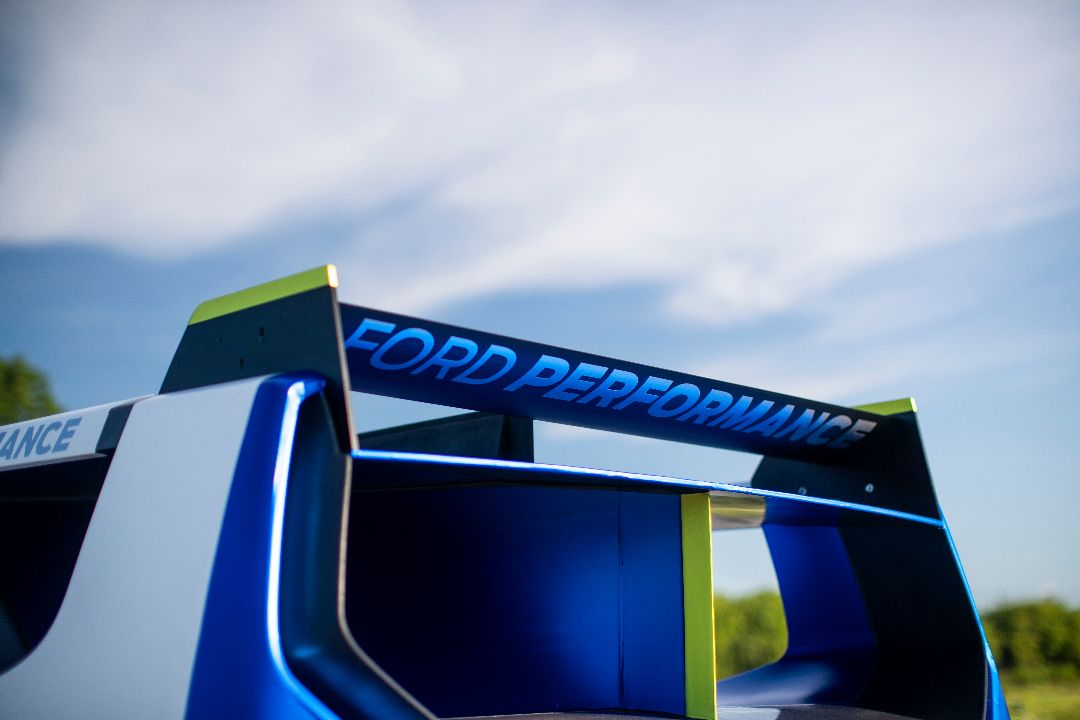
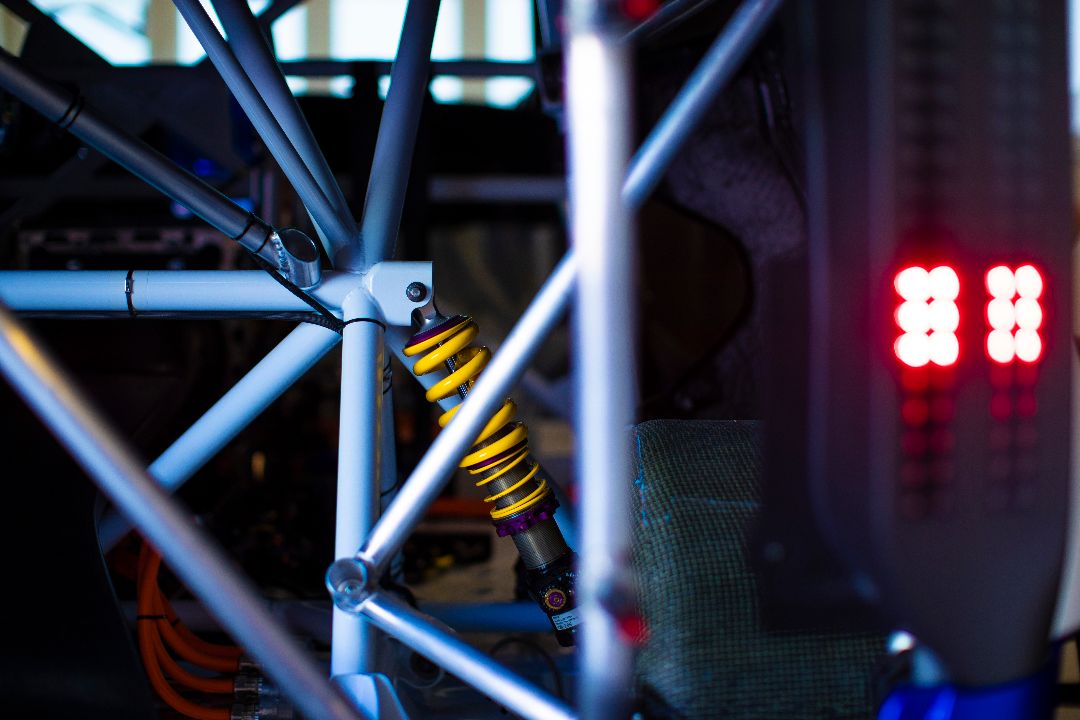
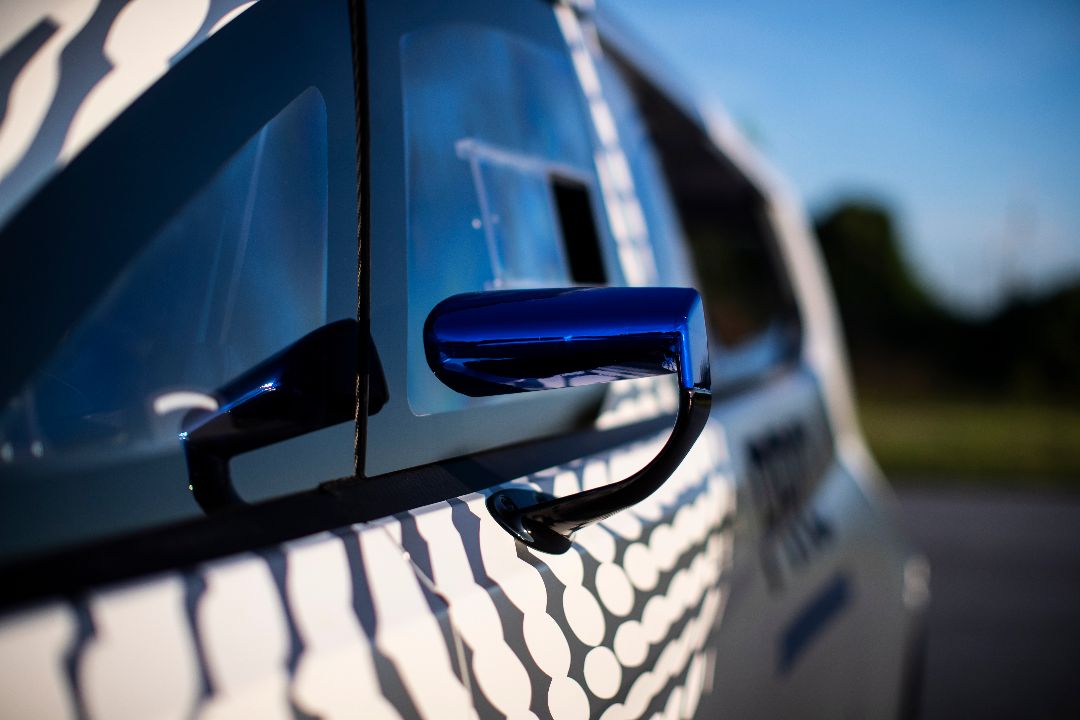
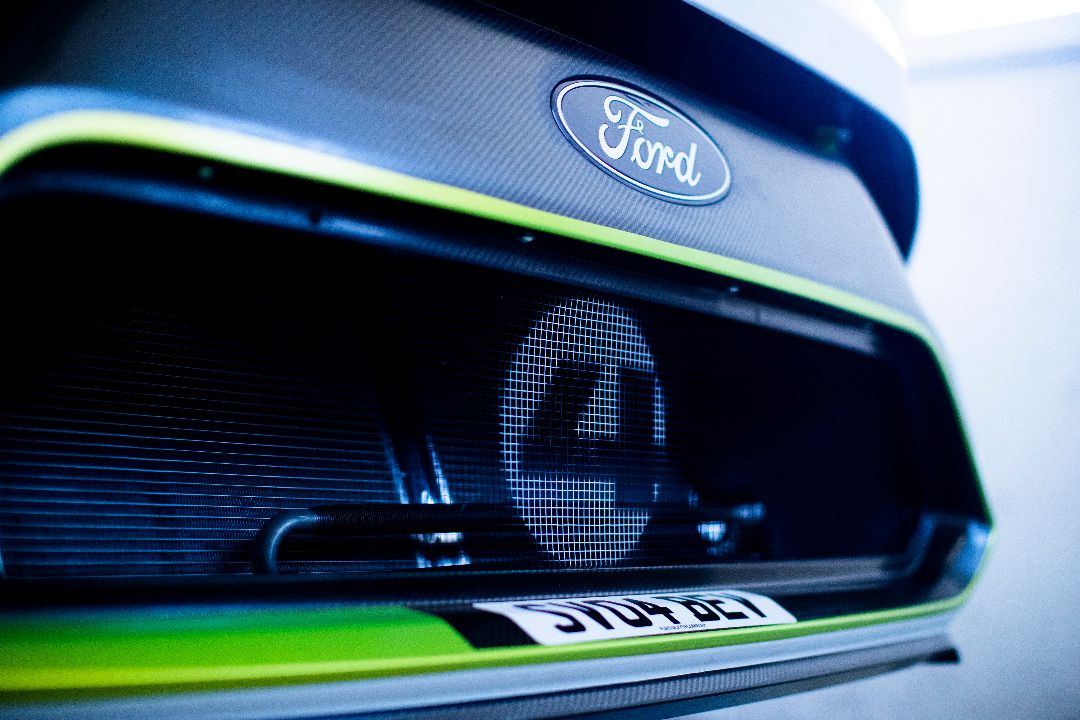
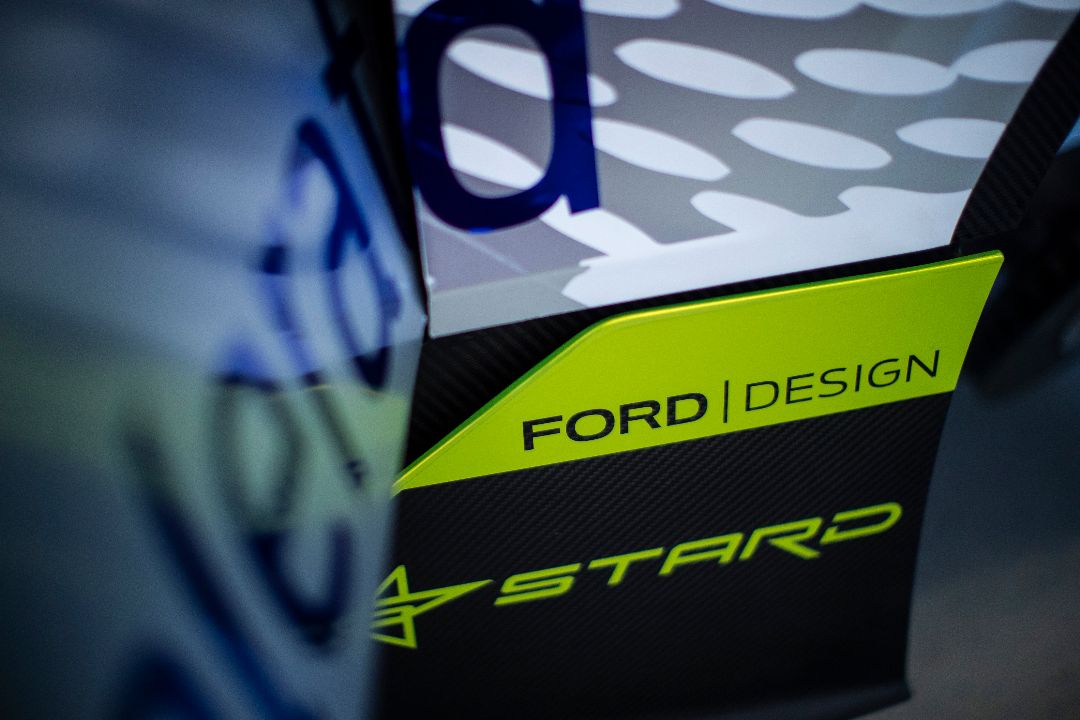
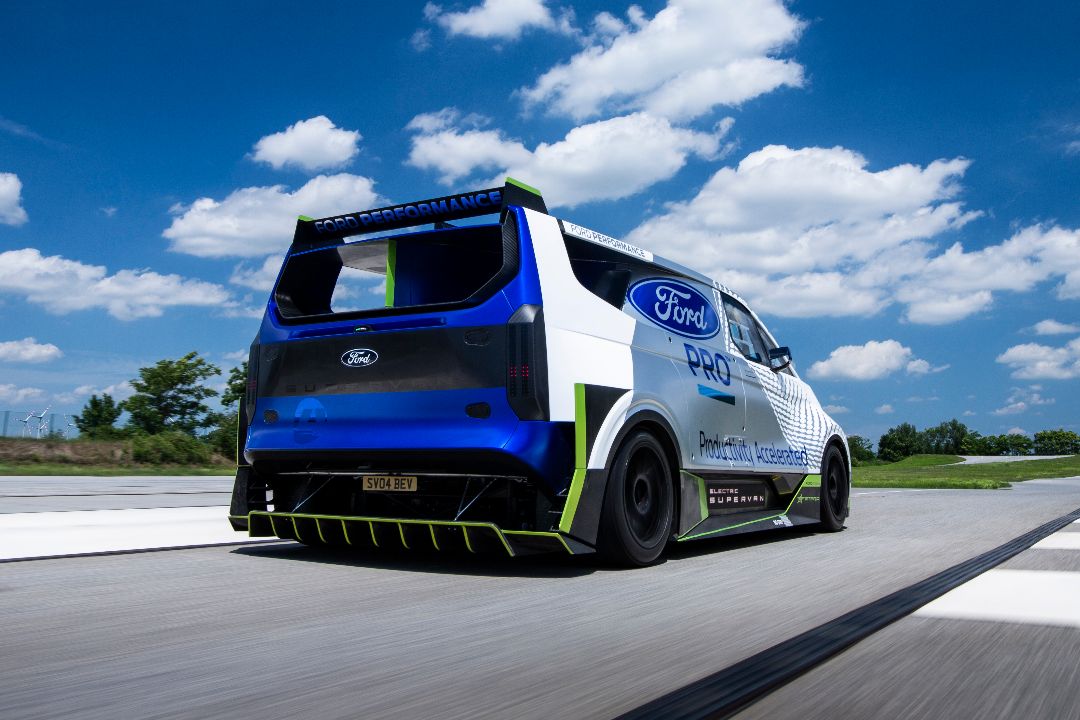
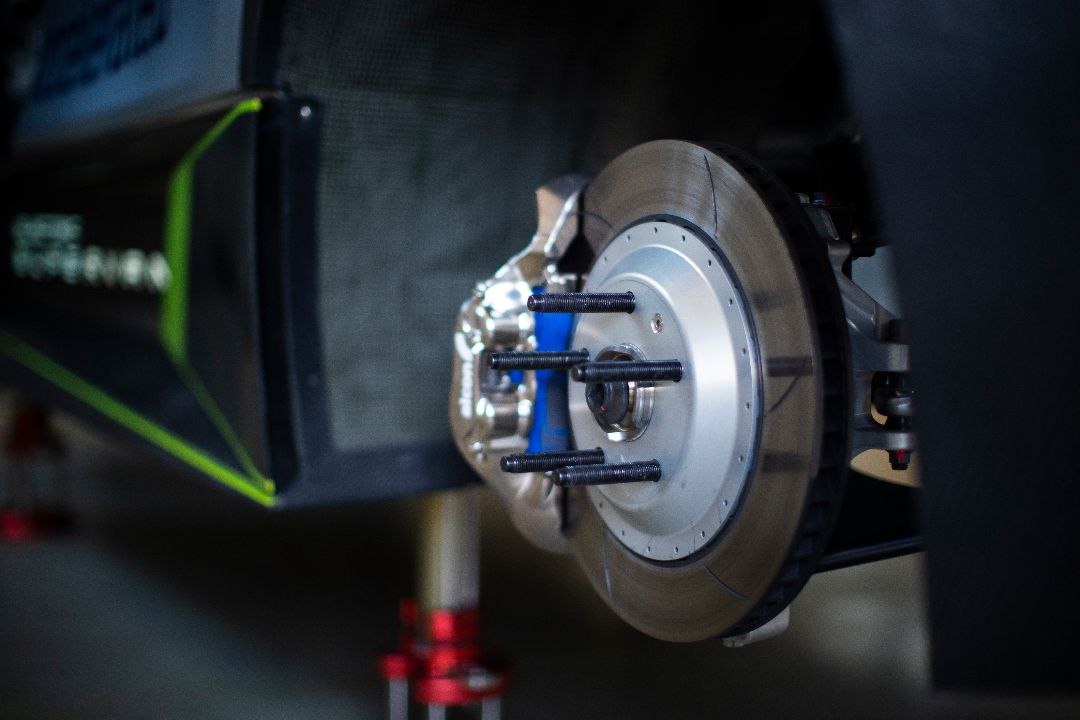
Ford’s first SuperVan was revealed in 1971 with a mid-mounted engine from the Le Mans-winning Ford GT40. It was based on the Transit Mk1. SuperVan 2 followed shortly after with a glassfibre version of the Transit Mk2 body. It had a 590 PS Cosworth V8 put under the bonnet. SuperVan returned for a third time as the facelifted Transit Mk3. Power came from a 650 PS Cosworth HB engine shared with Formula 1 cars of the era.
The Electric SuperVan will be making its debut at the Goodwood Festival of Speed. The driver will be Romain Dumas, a multiple record holder at Goodwood, Pikes Peak and the Nurburgring.
Also going up the famous hill climb will be the new Ford Ranger Raptor with its V6 petrol engine.
Needless to say, the SuperVan is a one-off and won't be going on sale! But it does demonstrate the capabilites of Ford's electric vans as in between runs, the Ford Electric SuperVan will only need 45 minutes to full recharge using a standard fast charger. Electric motorsport has never looked so good.
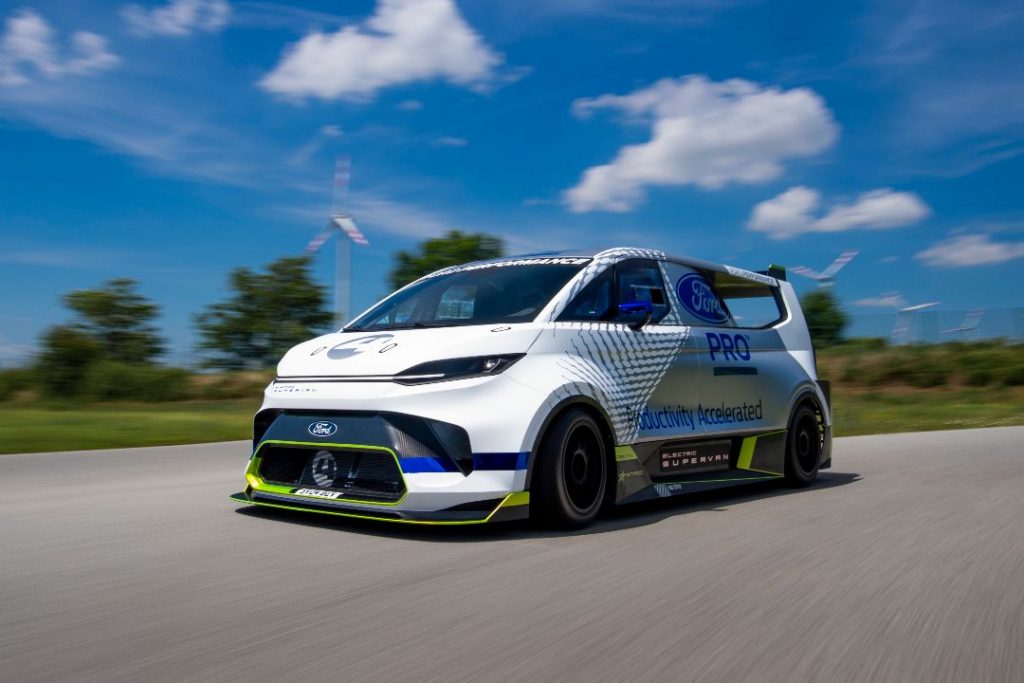
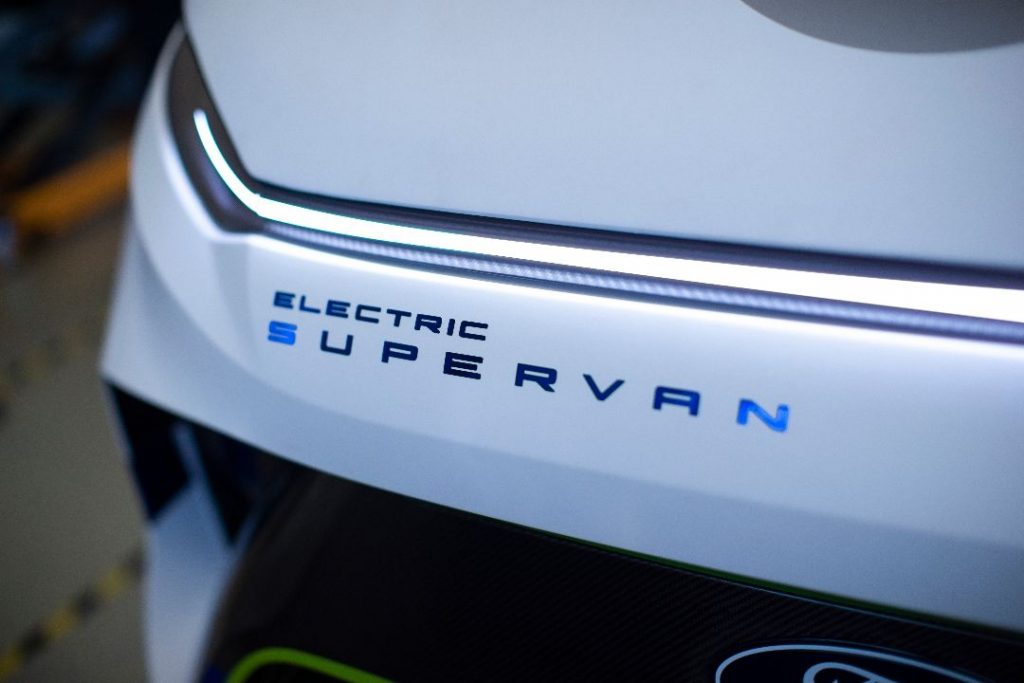
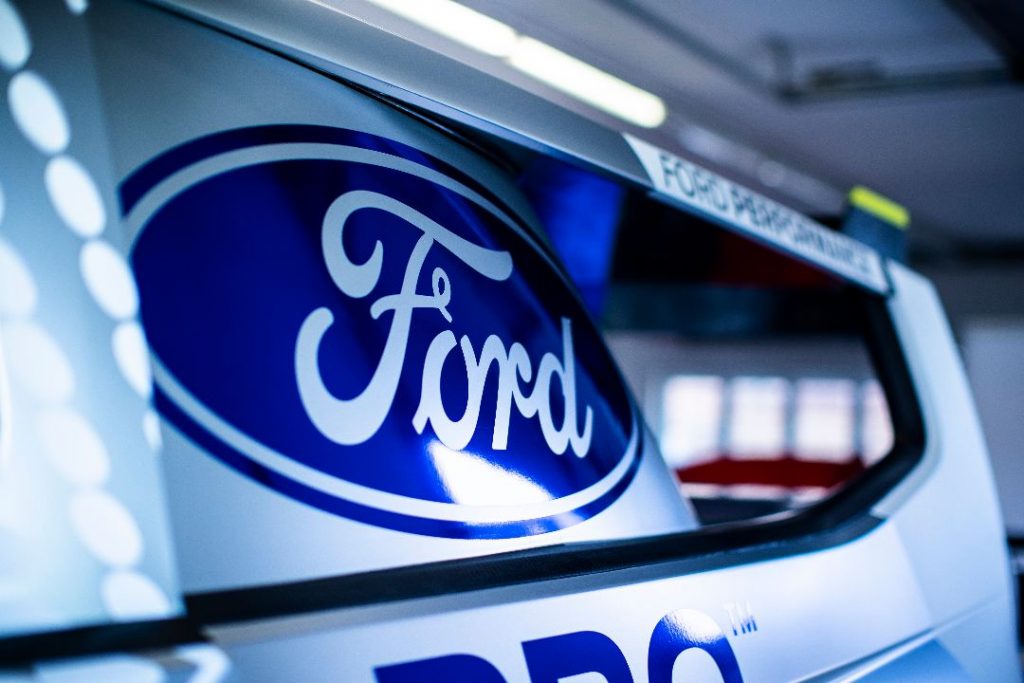
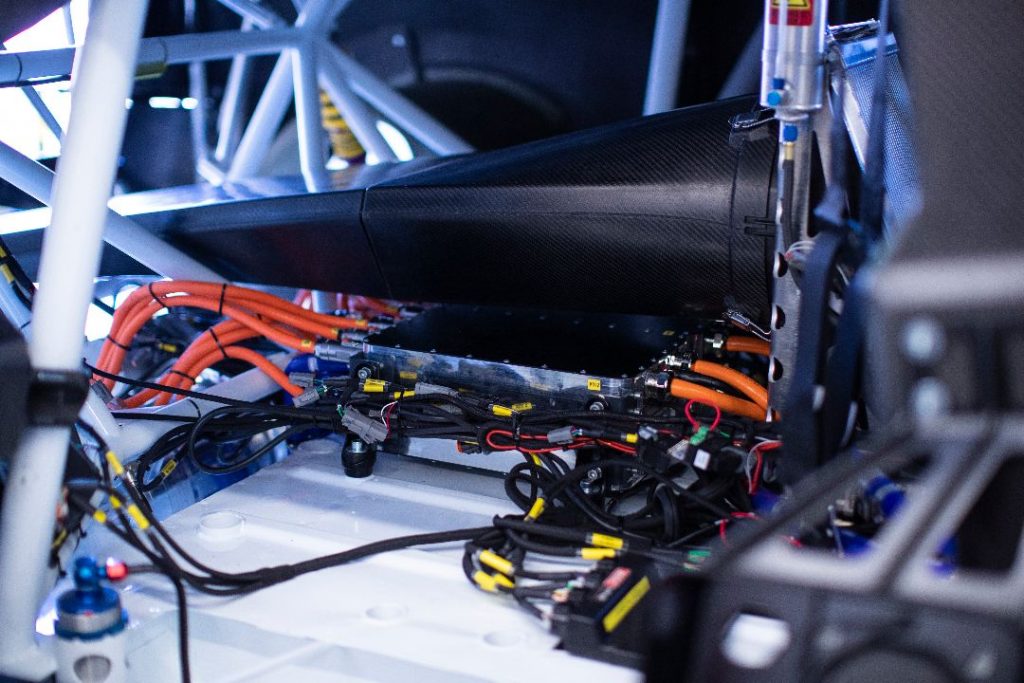
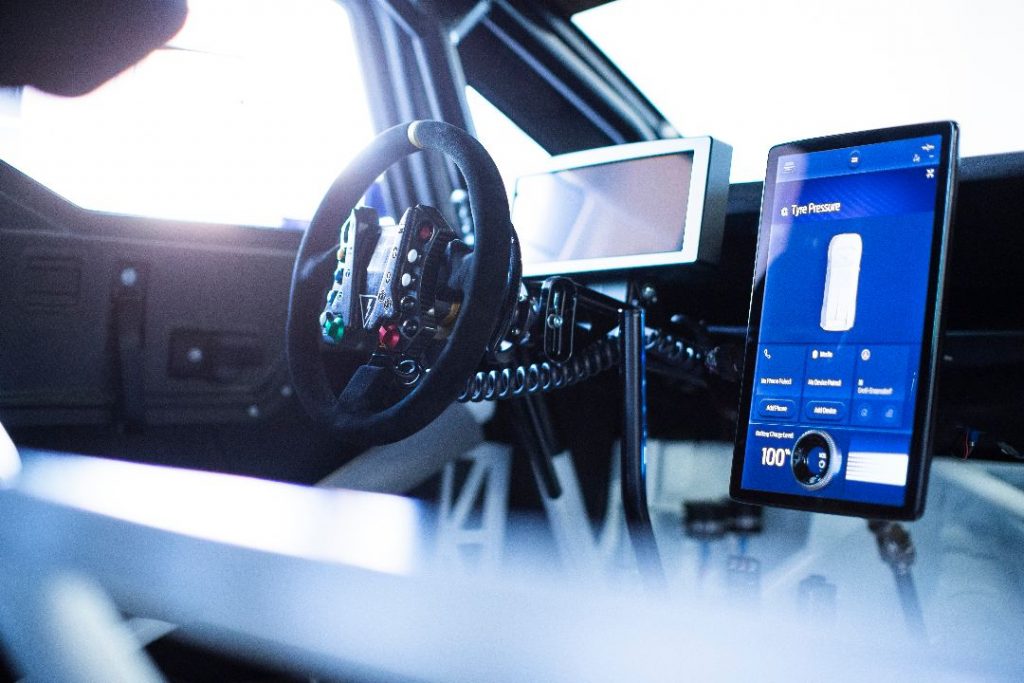
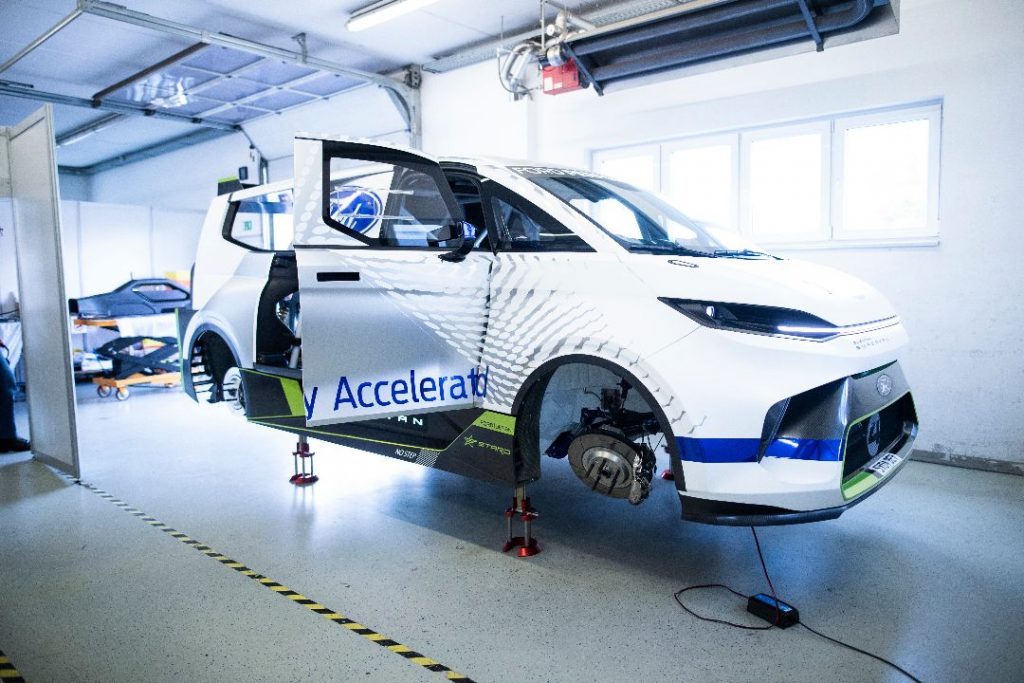
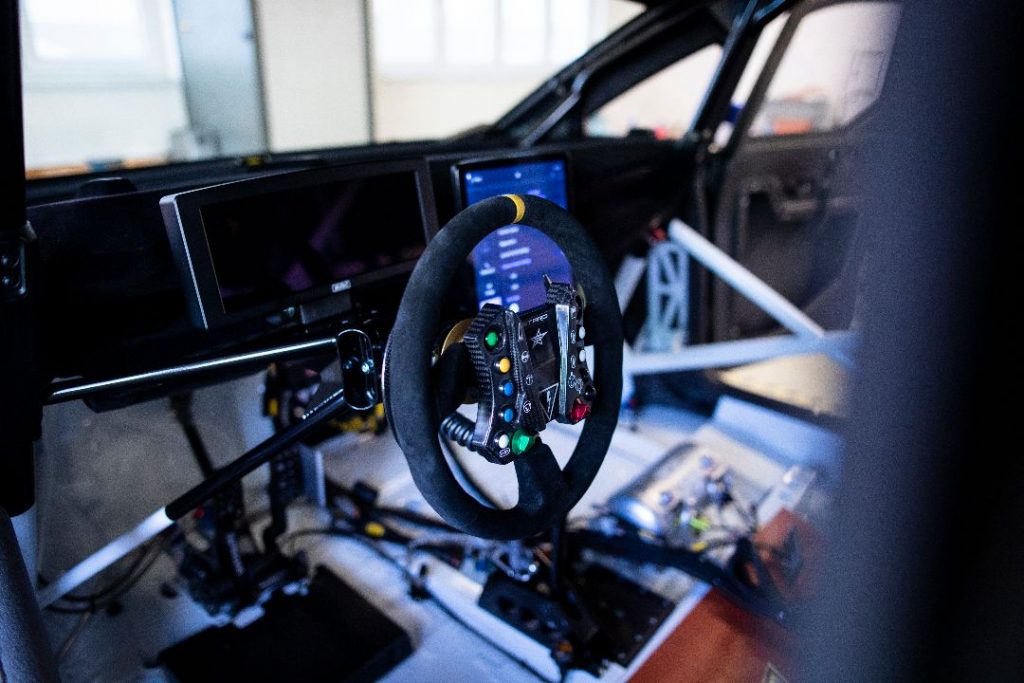
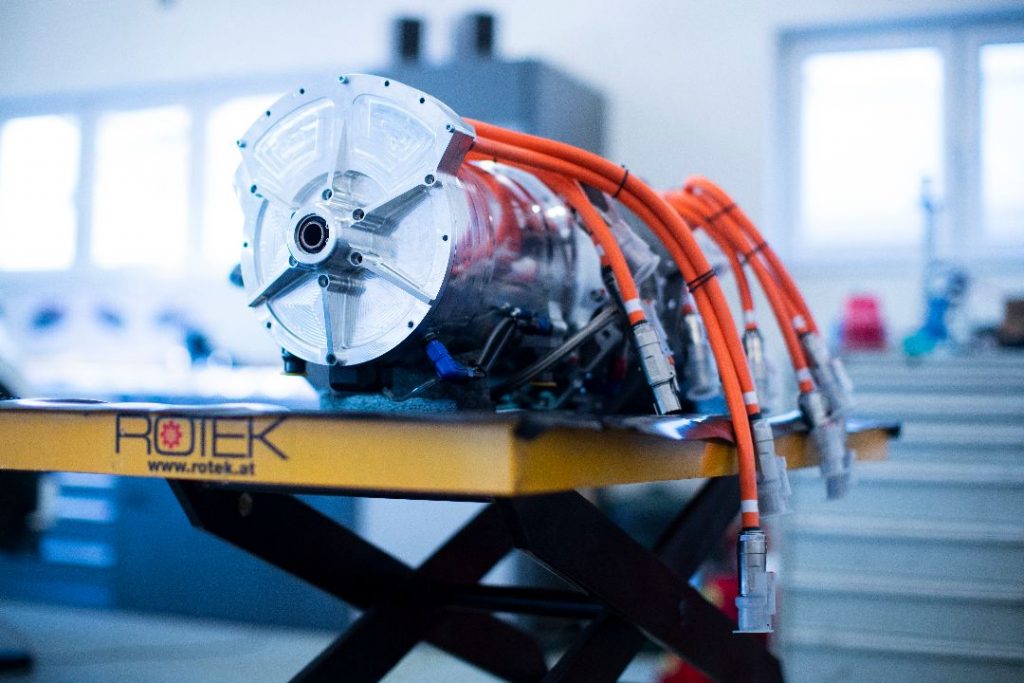
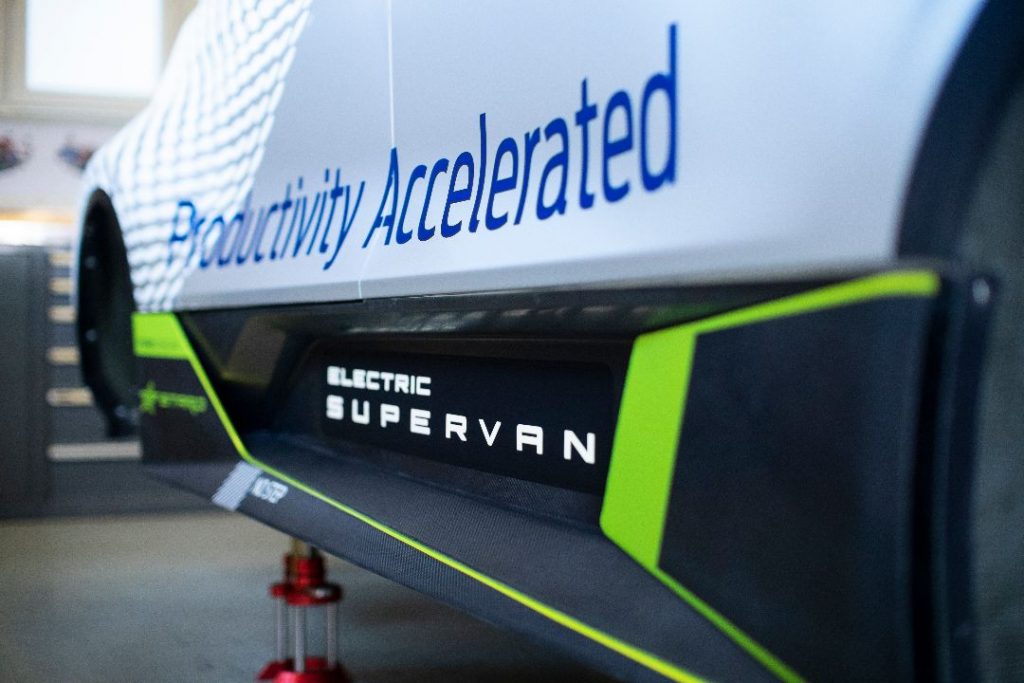
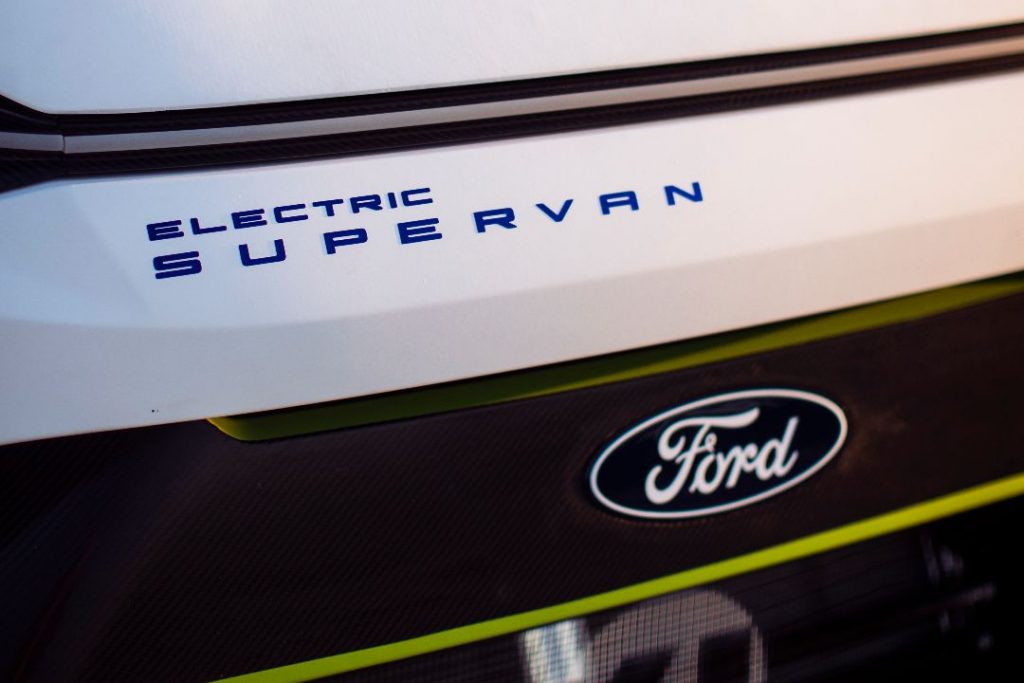
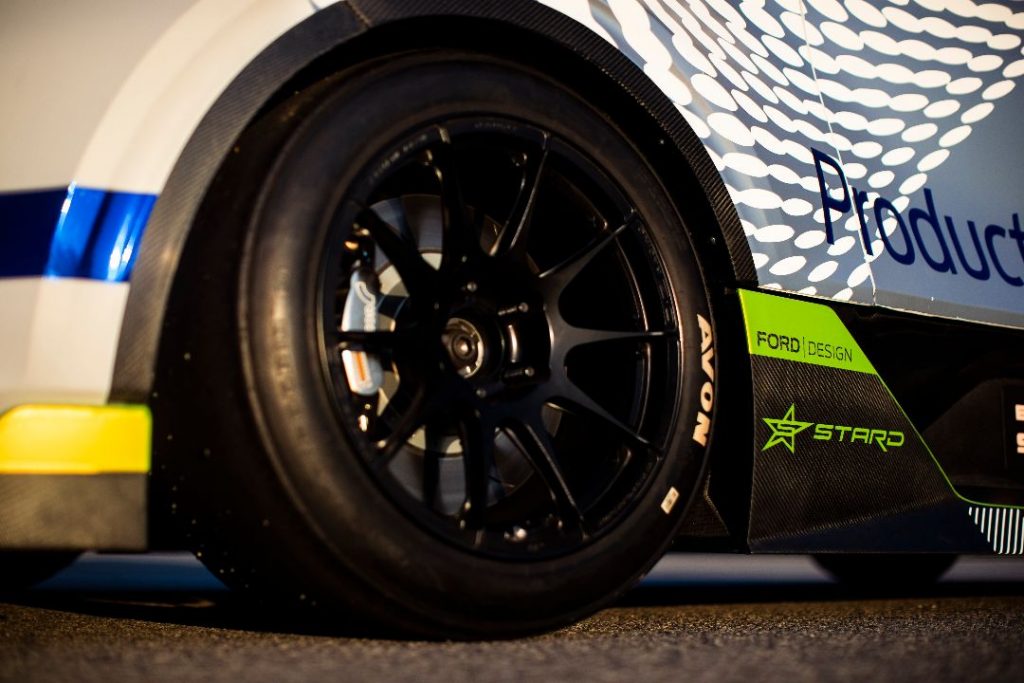
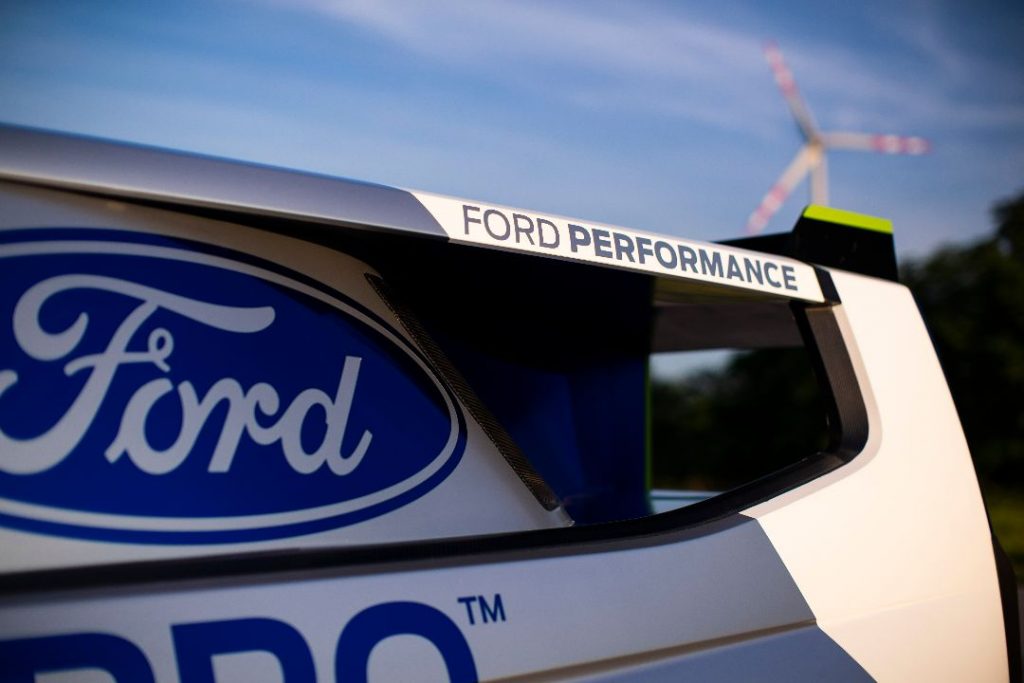
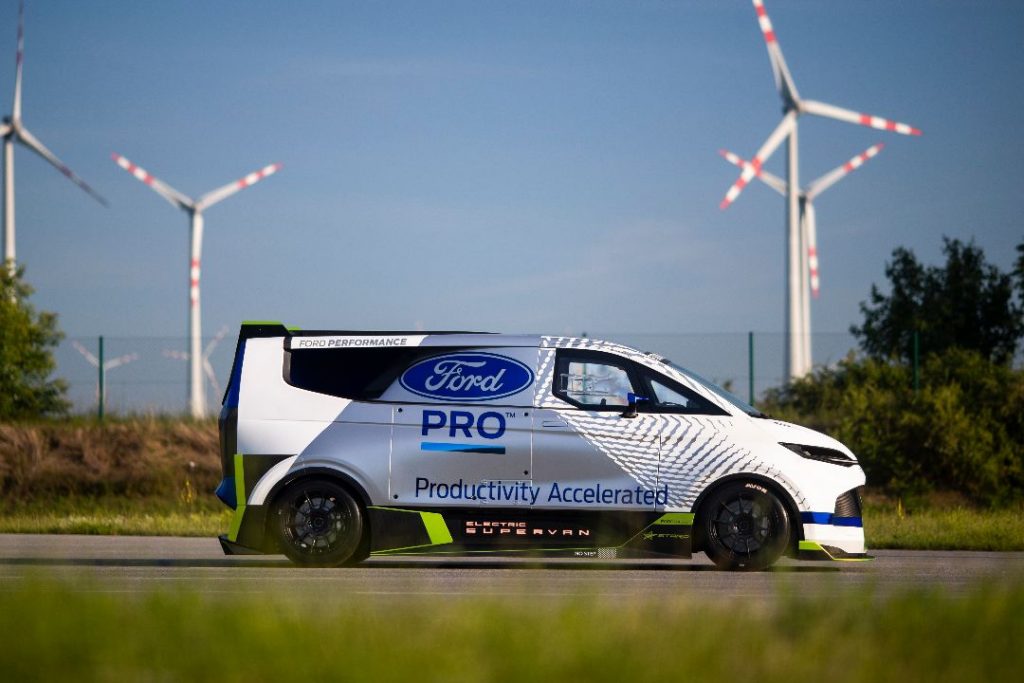
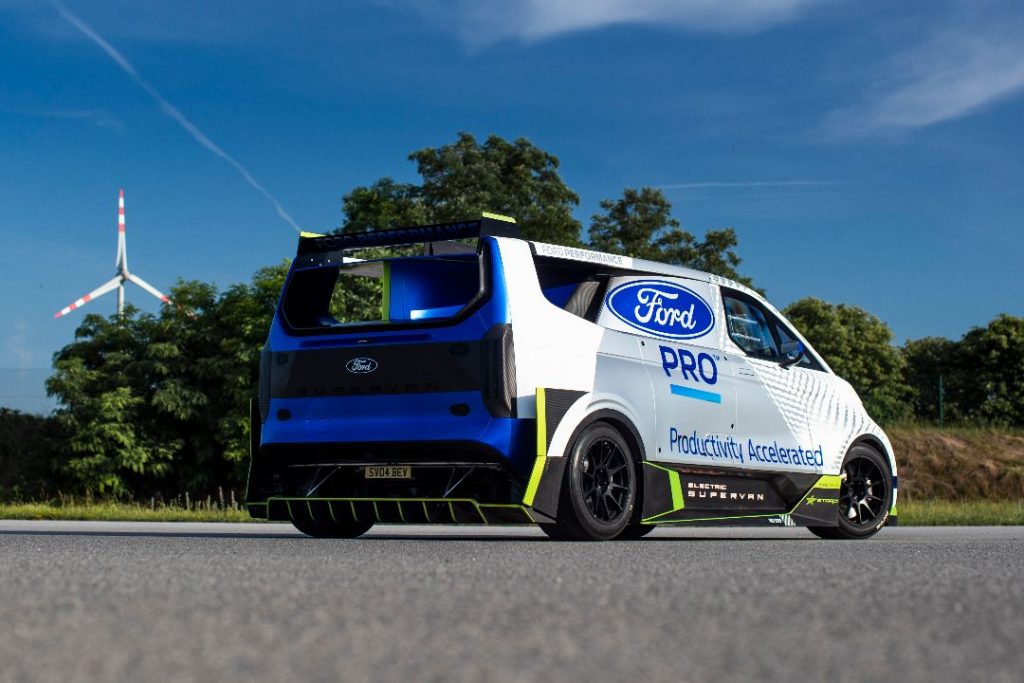
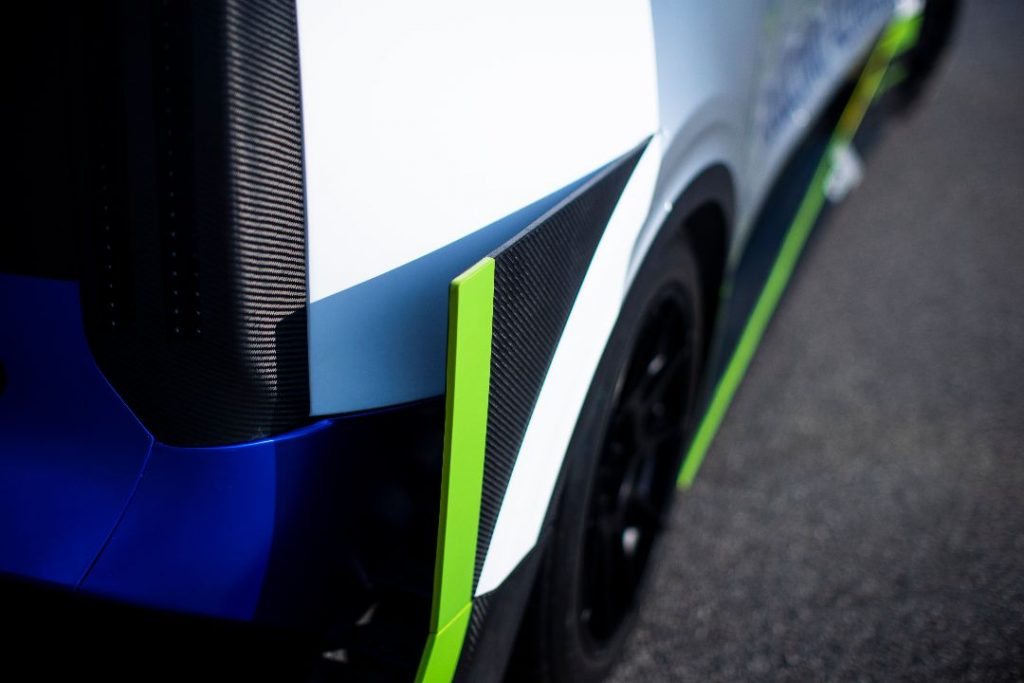


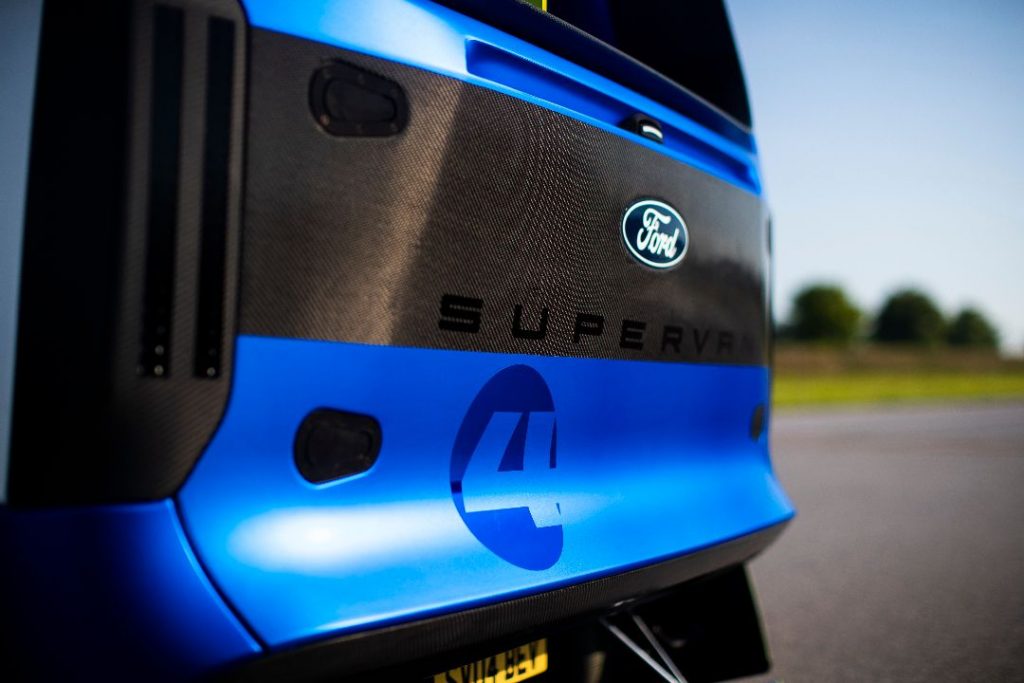
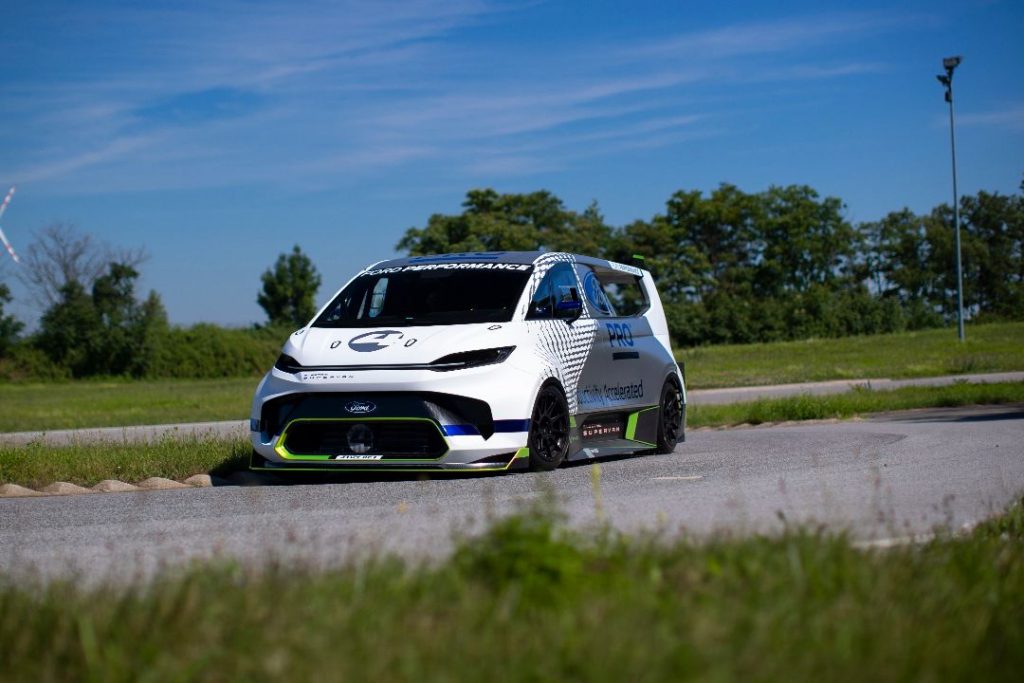
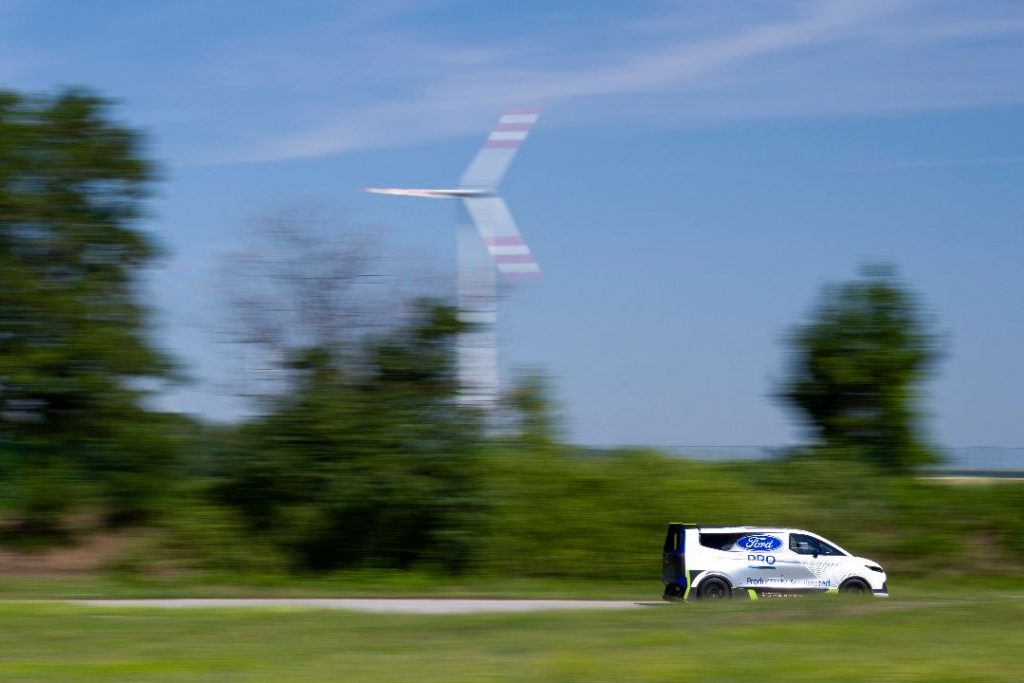
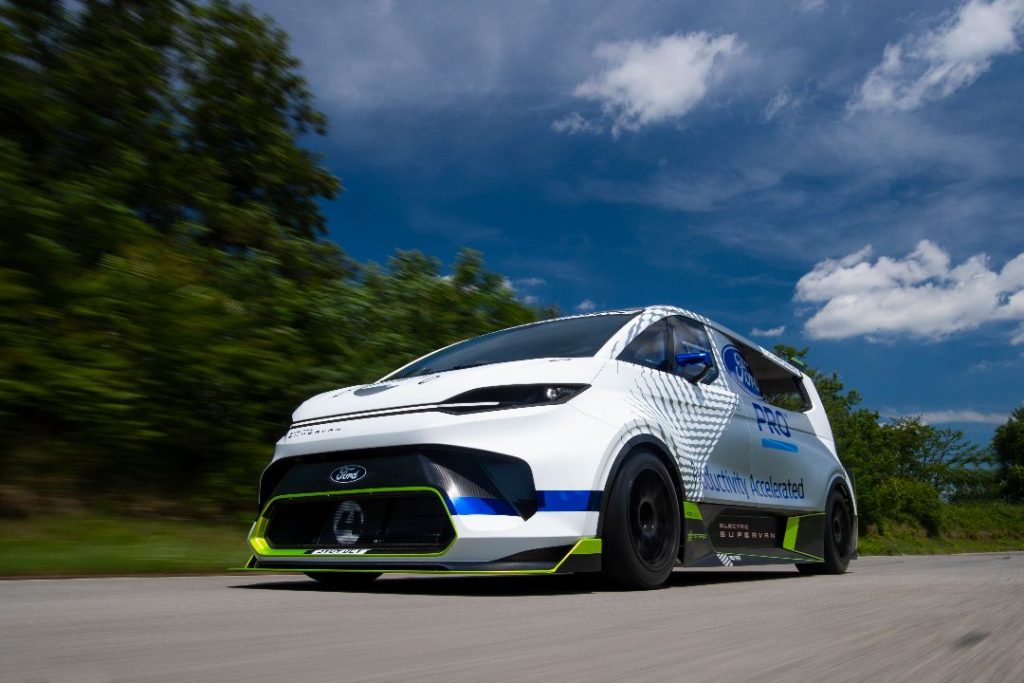
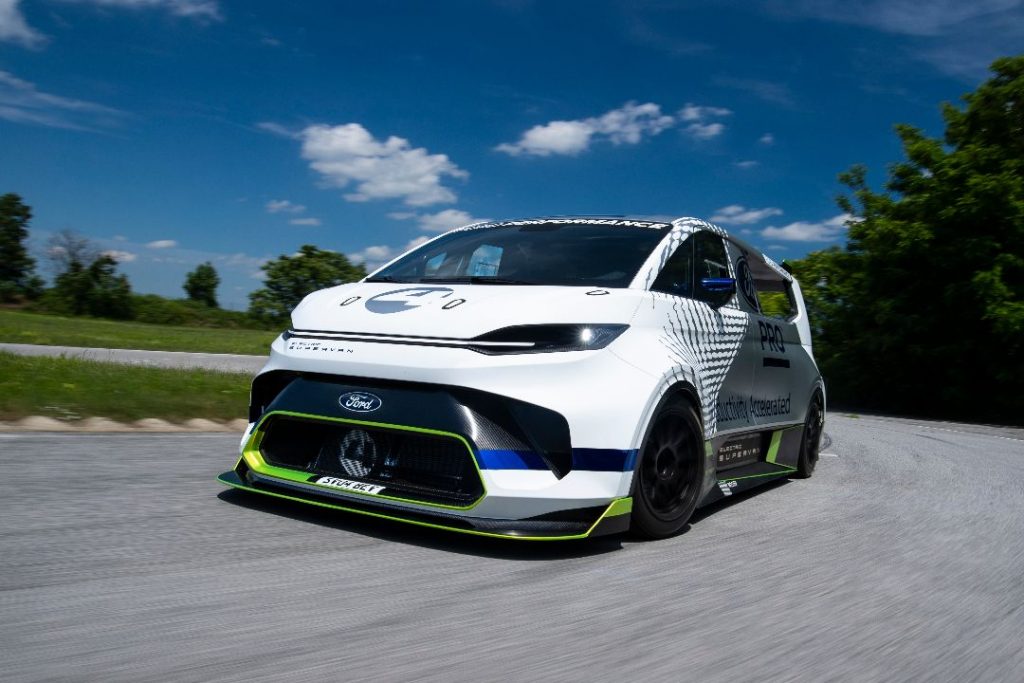
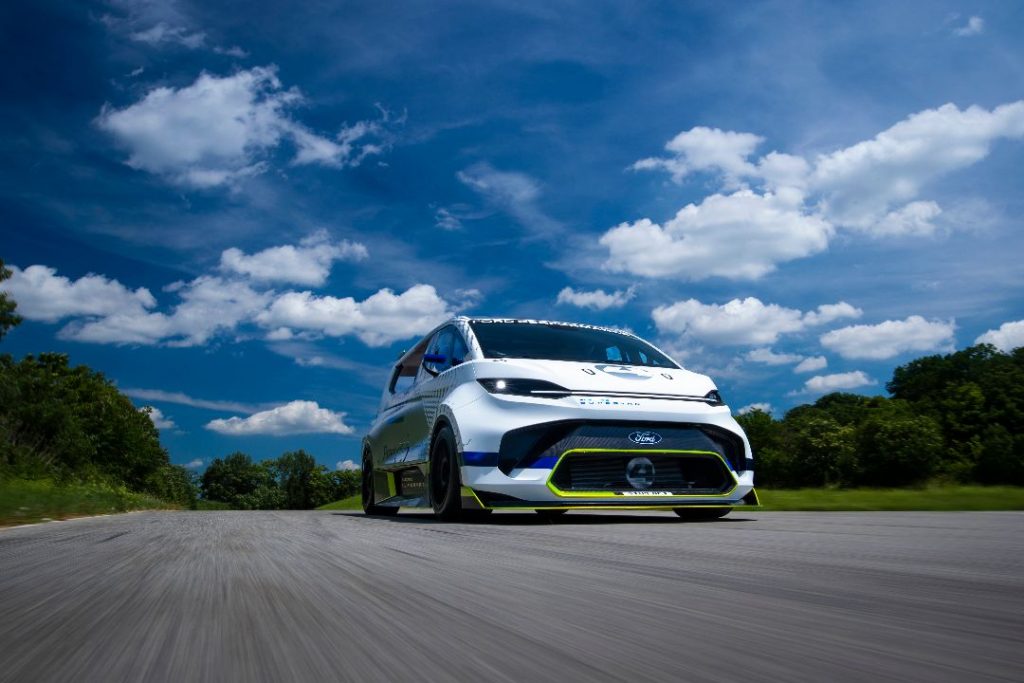
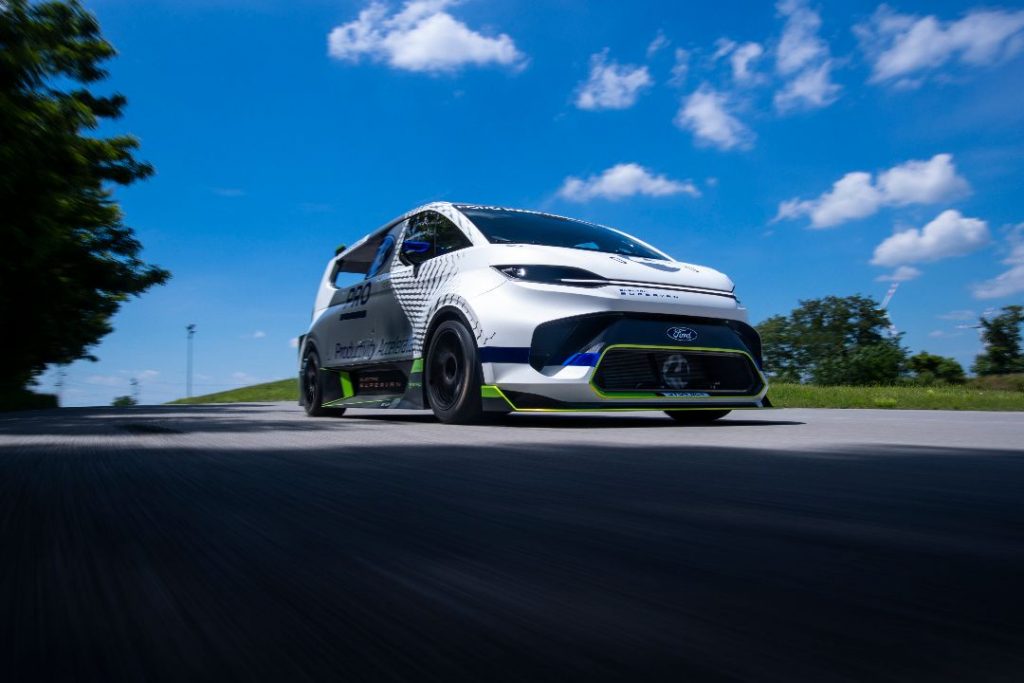
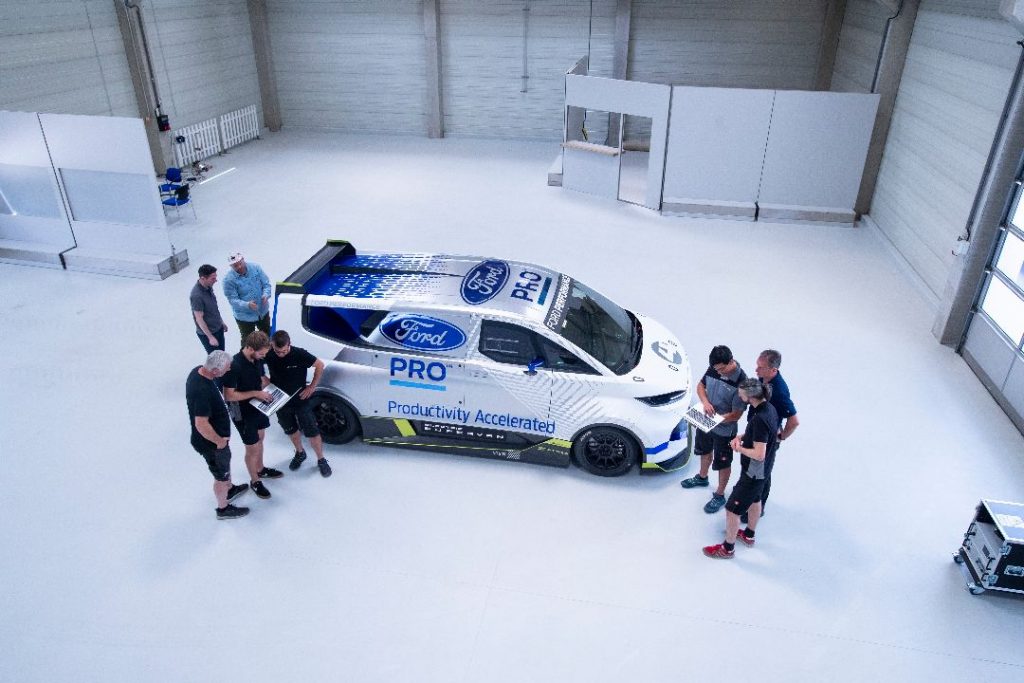
Ford Transit vans will now get Pre-Collision Assist with Pedestrian Detection autonomous emergency braking as well as a Lane-Keeping system on all Ford Transit Trend, Limited and Trail models from spring next year.
That will mean that 60% of all Transit vans sold across Europe will now get the systems.
Transit Trend trim level vans will also now get Ford’s Quickclear heated windscreen along with auto headlights and rain-sensing windscreen wipers.
Top of the range Limited trim Transit vans will also get new additional standard features, and will include the updated SYNC 4 infotainment system. The 12in touchscreen is a significant upgrade to the current SYNC 3 system with Limited vans also getting a high-mounted rear-view camera with LED downlighter. Limited vans will also get a keyless start system, Ford Power, which the company says will help customers with frequent-stop itineraries.
Additional driver assistance systems will also be added to the range with a new Reverse Brake Assist as well as a 360-degree camera option.
SYNC 4 will enable vans to have Ford Power-Up software updates which remotely upgrades software systems, keeping the van’s technology up-to-date wirelessly and without any involvement needed by the driver.
Read our Ford Transit review
Other features of SYNC 4 include cloud-connected live traffic, weather and parking updates, wireless Android Auto or Apple Carplay with two mobile devices connected simultaneously and Advanced Speech Recognition with Conversational Language Commands.
All new Transits now get the FordPass Connect modem fitted as standard which improves vehicle productivity by providing real-time vehicle health data through FORDLiive to keep dealers up to date with the health status of the van. This ensures that any scheduled or unscheduled work can be carried out quickly, reducing the amount of time the van spends off the road.
All upgrades to the Transit range will begin for orders in Q4 of this year.
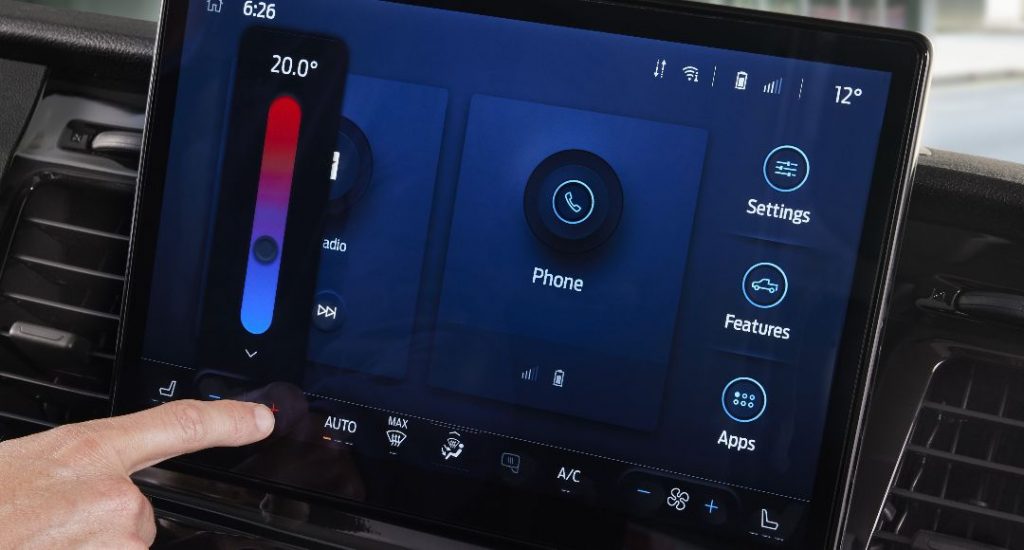
The Ford E-Transit is to begin fleet trails in the UK and Europe with some of the biggest names in home delivery and construction.
Trails of the electric Transit van will begin in spring 2022 with fleet operators in the postal, municipal and utilities, last mile and grocery delivery sectors all using the vehicle in their real world operations.
Germany, Norway and the UK will play host to a complete range of E-Transit models from panel vans, double cabs and chassis cabs with names such as Balfour Beatty, DHL Express in the UK, DPD and Ocado taking part. Also trailing the vans will be Recover Nordic, AWB waste disposal, the City of Cologne and Norwegian Post.
Read: Ford E-Transit review
In keeping with the sort of work they are to be doing, a number of the trial vehicles have been converted. Ford-approved Qualified Vehicle Modifiers have added refrigerated, dropside and caged tipper bodies.
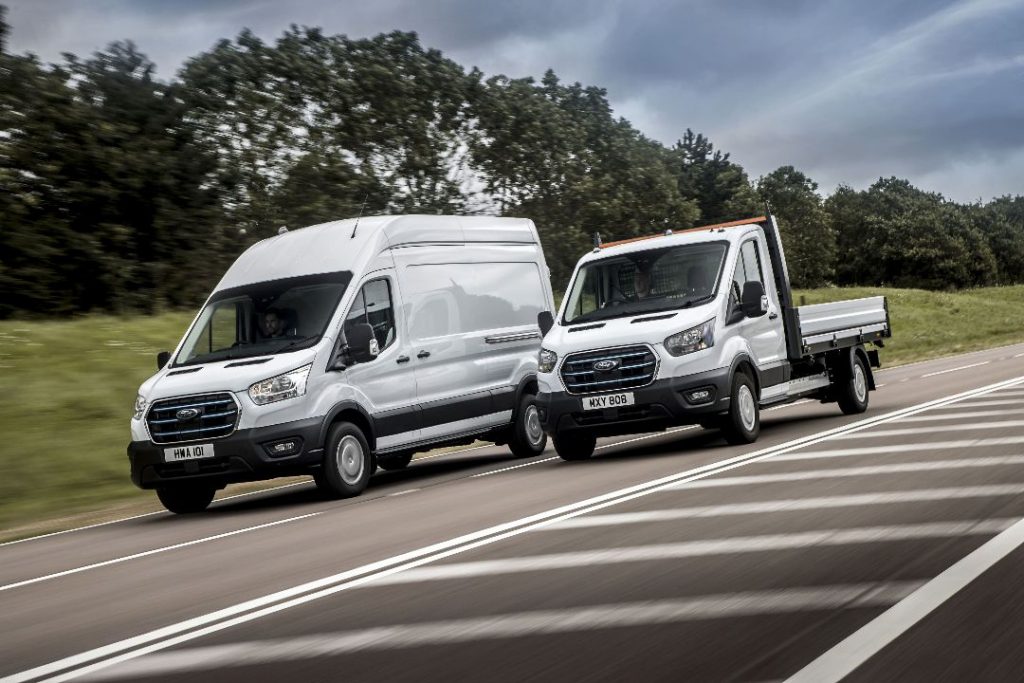
The latest Ford E-Transit fleet trail comes off the back of successful trials with the Ford Transit Custom Plug-In Hybrid which was tested extensively by existing Ford fleets, covering more than 150,000 miles and operating in zero-emission mode for 75% of their time while in central London.
Read more electric van reviews
“We want to demonstrate that helping customers reduce their environmental impact can go hand-in-hand with improving their productivity,” said Dave Petts, market lead, urban electrified vans, Ford of Europe. “Real-world mileage in customer hands helps us to show the business benefits that E-Transit can deliver, as well as providing valuable feedback on usage patterns and charging behaviour so that we can refine the operating experience. We firmly believe in treating our customers like family, and this programme highlights the value we place on those close partnerships.”
The E-Transit prototypes will be in the field for six to 12 months with each of the customers.
The arrival of the electric Transit van is part of Ford’s overall plans to electrify its entire vehicle range. The Ford E-Transit will be the first fully electric commercial vehicle in the Ford line-up when it goes on sale in 2023.
